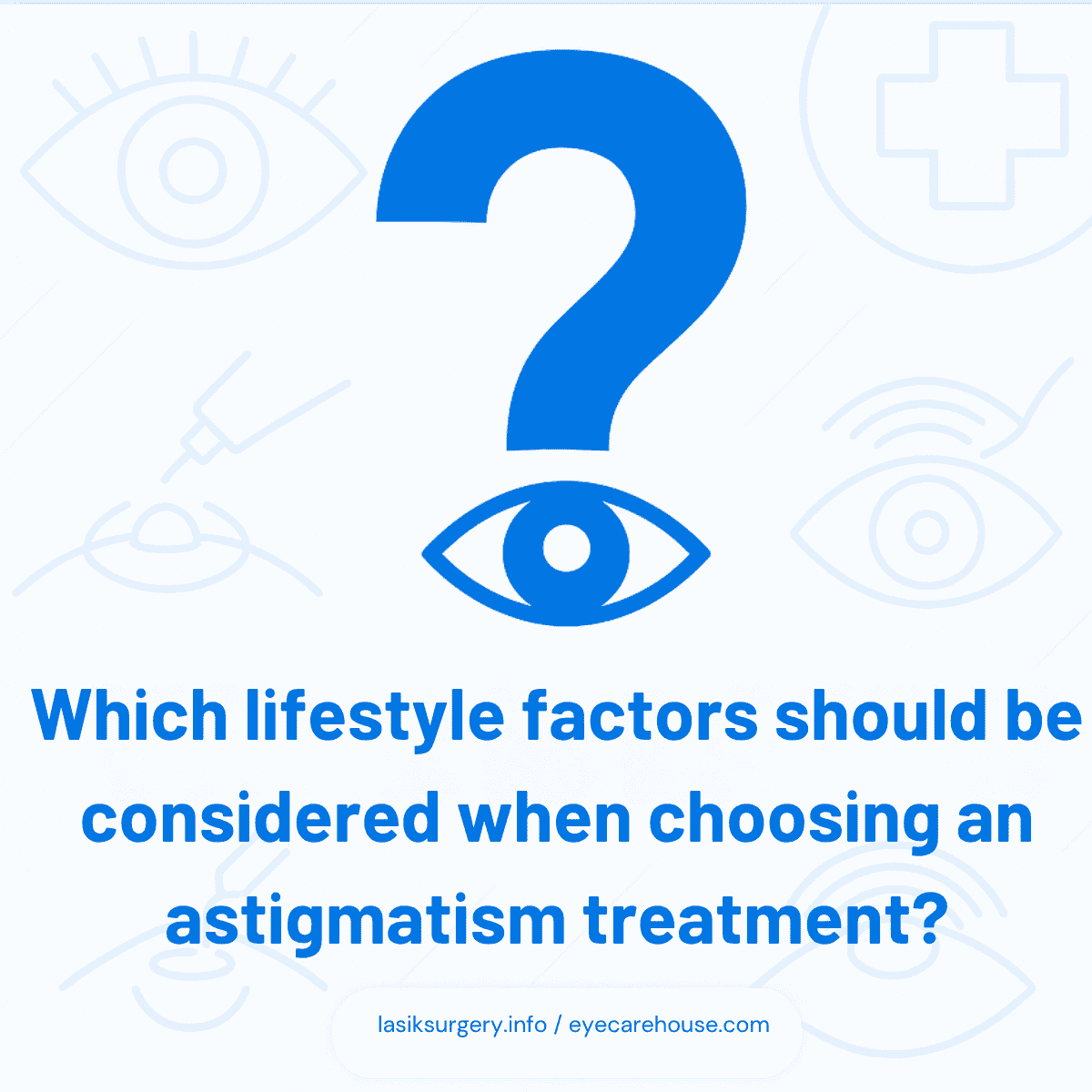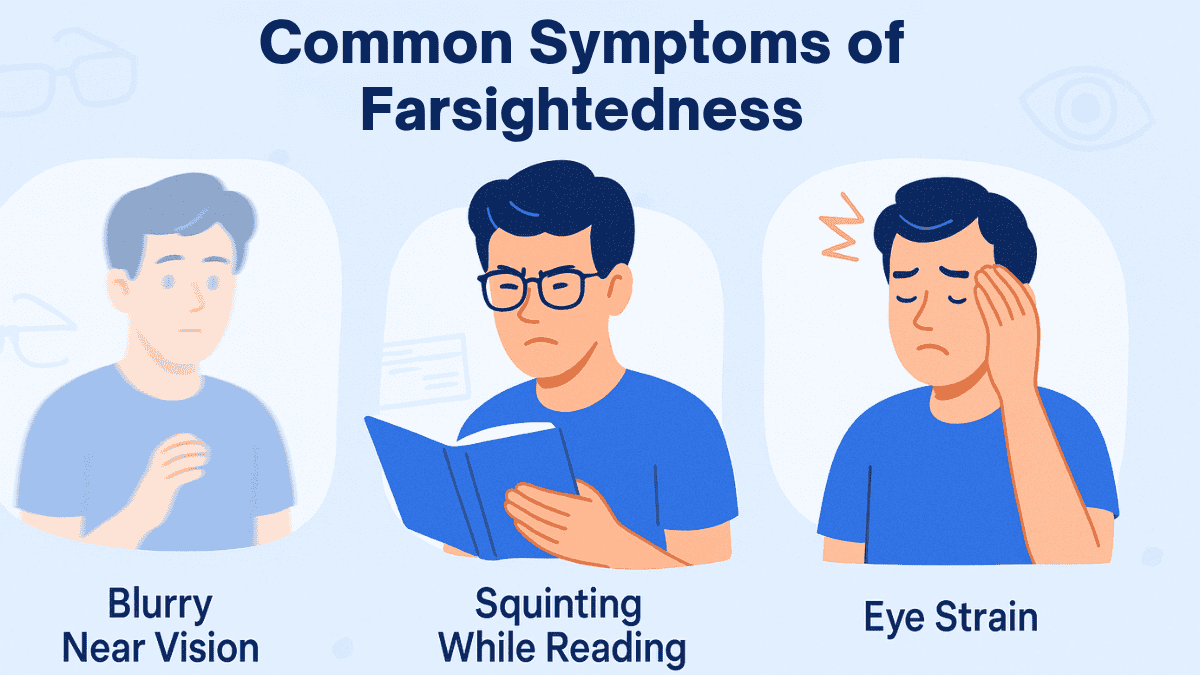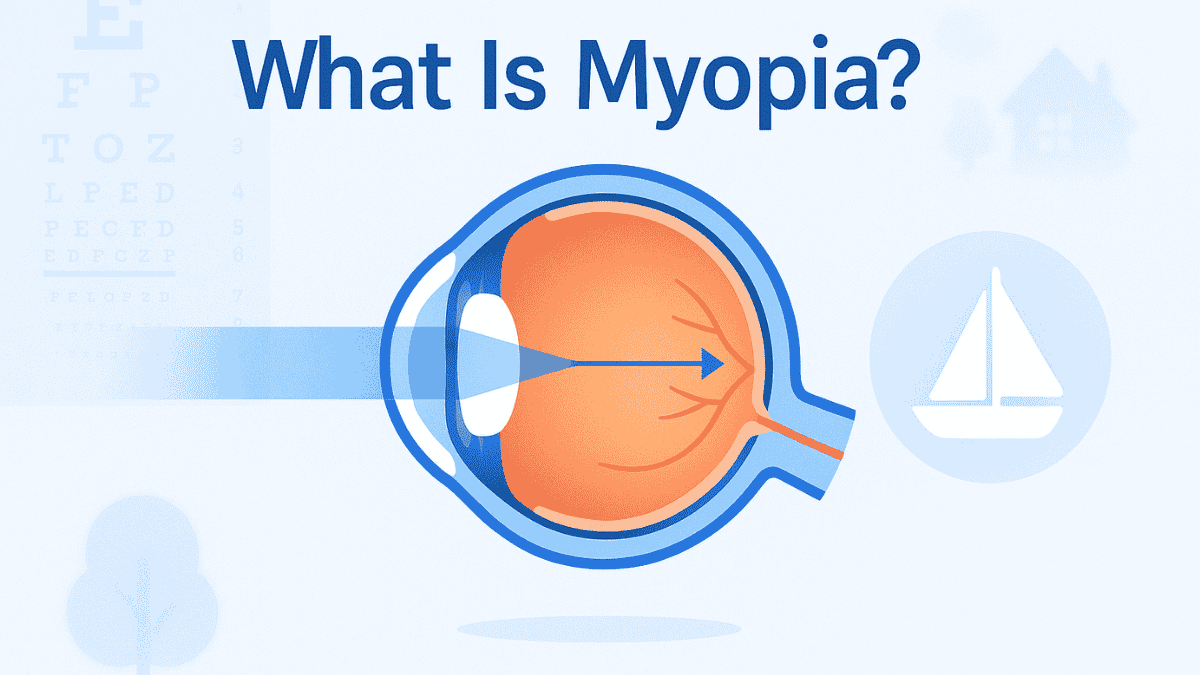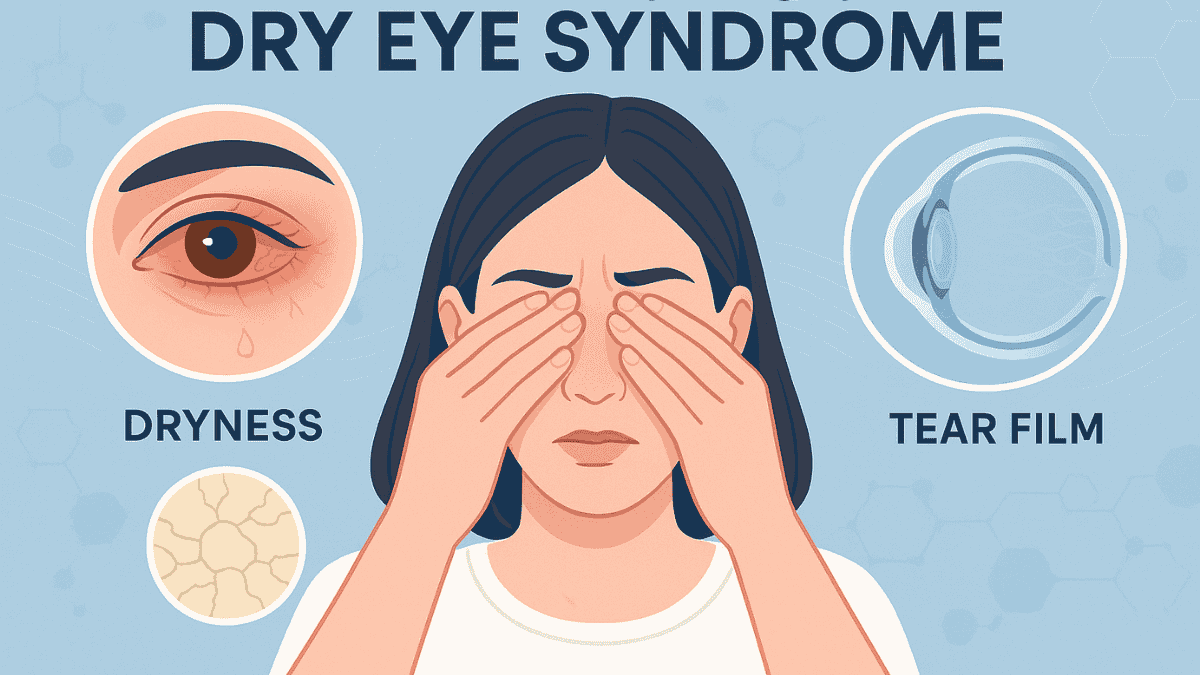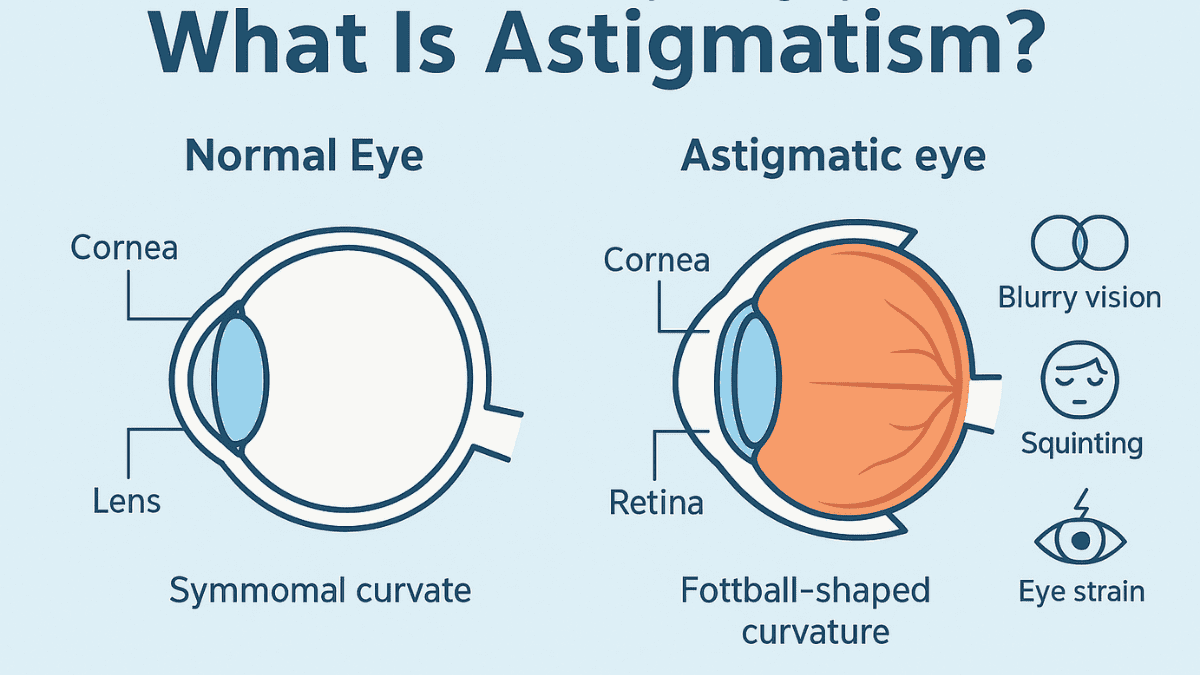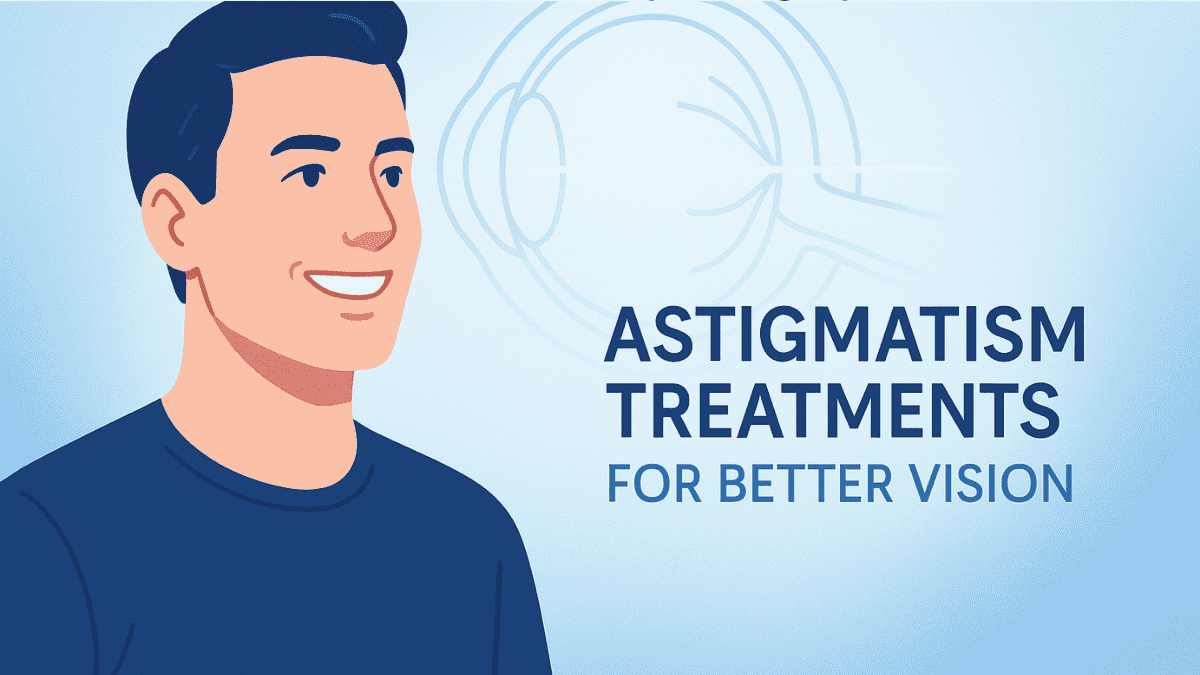
Astigmatism treatments have come a long way in helping people manage blurry or distorted vision caused by this common refractive error. Whether you’ve just been diagnosed or are exploring new options, understanding the available treatments is the first step toward clearer, more comfortable eyesight. From corrective lenses to cutting-edge laser surgery, today’s solutions offer real hope for improved visual clarity and long-term eye health.
Table of Contents
What is Astigmatism?
Astigmatism is a common refractive error, meaning the eye does not bend light properly. It occurs when the cornea, the eye’s front surface, or the lens inside the eye has an irregular curve. This irregularity prevents light from focusing correctly on the retina, leading to distorted or blurred vision at all distances.
Many people have some degree of astigmatism, often from birth, though it can also develop after an eye injury, eye disease, or surgery. An astigmatism diagnosis typically happens during a comprehensive eye exam conducted by an eye doctor. Symptoms that might indicate astigmatism include eye strain, headaches, squinting to see clearly, and difficulty with night vision or seeing halos around bright lights.
It’s important to get your astigmatism diagnosed by qualified medical professionals. Understanding the specific nature of your astigmatism is the first step toward effective treatment and maintaining good eye health. Various eye conditions can present with similar symptoms, so a thorough eye examination is crucial.
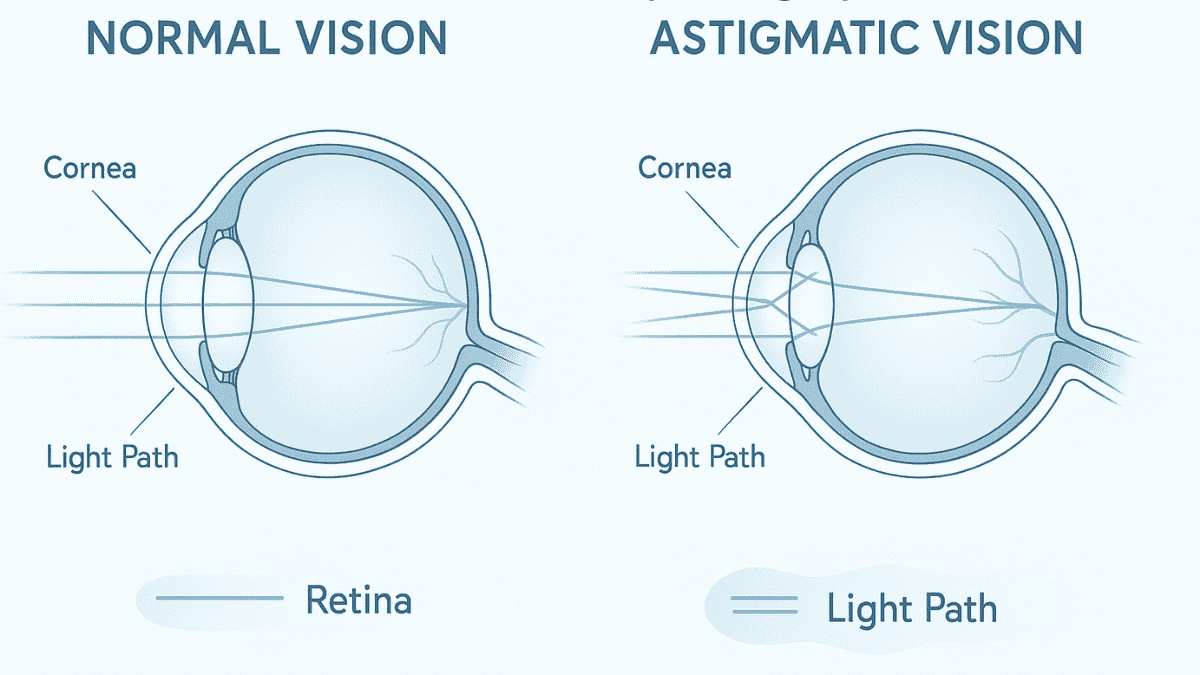
Related Article
What Is Astigmatism? Causes, Symptoms, and TreatmentsGlasses: The Classic Solution
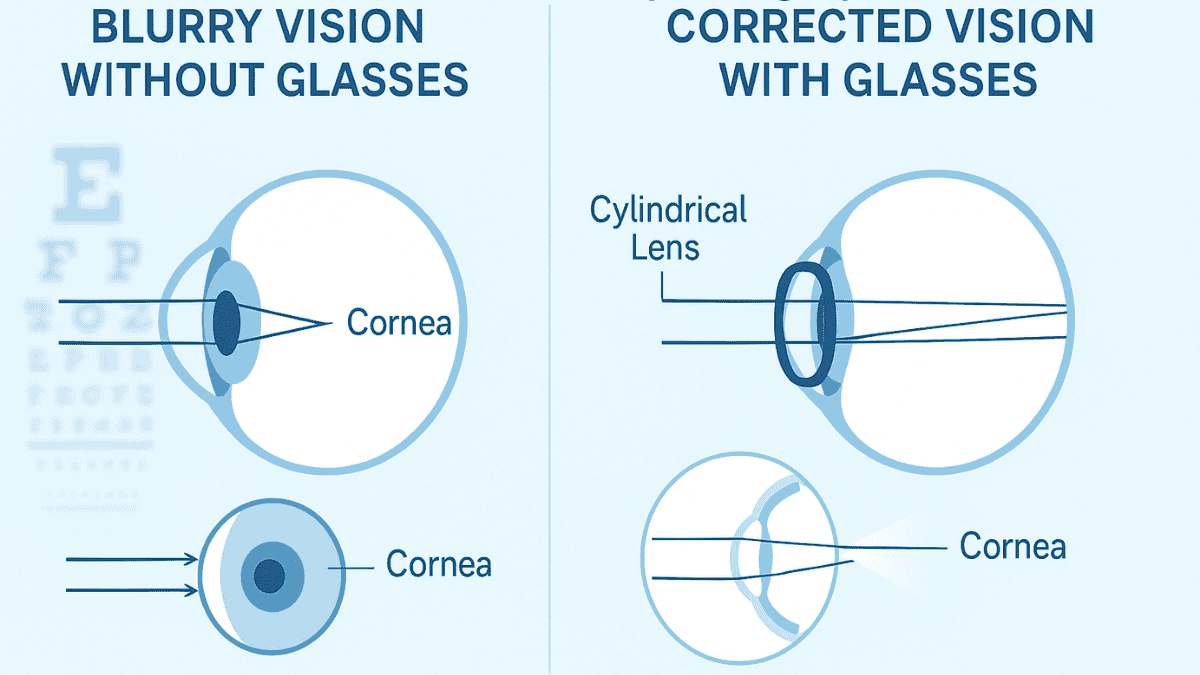
Prescription eyeglasses are a primary and often initial method for treating astigmatism. These corrective lenses are specially designed with a cylindrical lens power to compensate for the cornea’s irregular shape. This design helps to properly bend light onto the retina, providing clear vision.
Eyeglasses are a non-invasive and widely accessible option for vision correction. They can correct astigmatism along with other refractive errors like myopia (nearsightedness) or hyperopia (farsightedness) simultaneously. Your eye care provider will determine the precise prescription needed after a thorough eye exam.
The lenses correct astigmatism by having different powers in different meridians of the lens. This specific curvature counteracts the eye’s own irregular curvature. Modern lens technology also offers various coatings, such as anti-reflective and scratch-resistant options, to improve vision and lens durability.
Pros of Glasses for Astigmatism
- Simple to use and generally require minimal maintenance.
- Can address multiple vision problems in a single pair of lenses.
- Often more affordable than surgical interventions or specialized contact lenses.
- No direct contact with the eye, reducing the risk of eye infection associated with lenses.
Cons of Glasses for Astigmatism
- Can be cumbersome for sports or other vigorous activities.
- Frames may restrict peripheral vision for some wearers.
- Vision is only corrected when the glasses are worn.
- Lenses can fog up in certain weather conditions or get smudged easily.
Related Article
Laser Eye Surgery Age Limits: What Parents Should KnowContact Lenses: A More Invisible Option
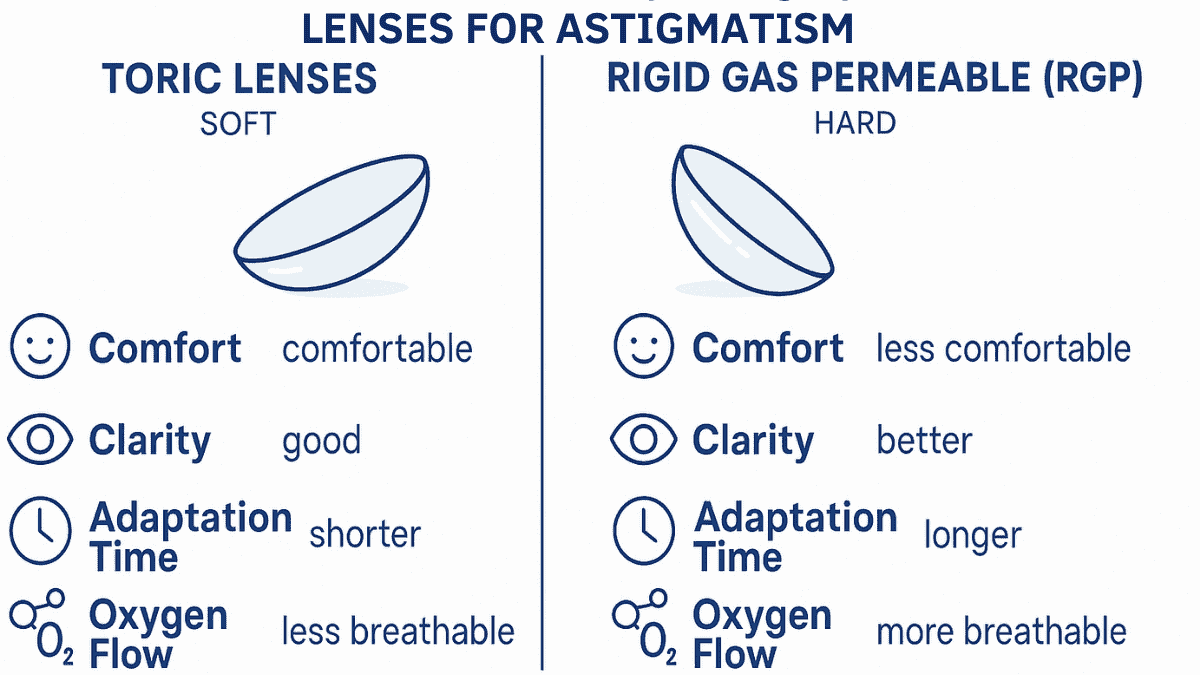
For individuals who prefer not to wear glasses, contact lenses offer an excellent alternative for treating astigmatism. These lenses sit directly on the eye’s surface, providing a wider field of vision compared to glasses. Special contact lenses, known as toric lenses, are specifically designed for astigmatism.
Toric lenses have a unique design that allows them to rotate to the correct orientation on the cornea, ensuring consistent vision correction. They are available in various materials, including soft hydrogel or silicone hydrogel, and rigid gas permeable (RGP) materials. Proper care and hygiene are essential when wearing contact lenses to prevent potential complications such as dry eye or eye infection.
Choosing the right type of contact lens depends on the degree of astigmatism, individual eye characteristics, and lifestyle. An eye doctor will perform a contact lens fitting to determine the most suitable option and provide instructions on wearing contact lenses safely. Regular follow-up eye exams are necessary to monitor eye health.
Related Article
ICL Surgery for High Prescription Eyes: What to ExpectSoft Toric Lenses
Soft toric lenses are popular due to their initial comfort and ease of adaptation. They are typically suitable for individuals with mild to moderate astigmatism. These lenses drape over the cornea, and advancements in design have improved their stability and visual acuity.
Many soft toric lenses are available as disposables, with daily, bi-weekly, or monthly replacement schedules. This variety offers convenience and can reduce the risk of lens-related complications if hygiene practices are followed. However, for very high degrees of astigmatism, they might not provide the sharpest vision compared to RGP lenses.
Rigid Gas Permeable (RGP) Lenses
RGP lenses, also known as hard contact lenses, are made from a firmer material that allows more oxygen to pass through to the cornea. They often provide crisper, more stable vision correction, particularly for individuals with higher levels of astigmatism or irregular corneas. These lenses maintain their shape on the eye, effectively masking the corneal irregularity.
While RGP lenses can offer superior optics, they may require a longer adaptation period for comfort. They are also more durable than soft lenses but necessitate careful handling to prevent scratches or breakage. Proper fitting by an experienced eye care professional is crucial for success with RGP lenses.
Orthokeratology: Reshaping Your Eyes
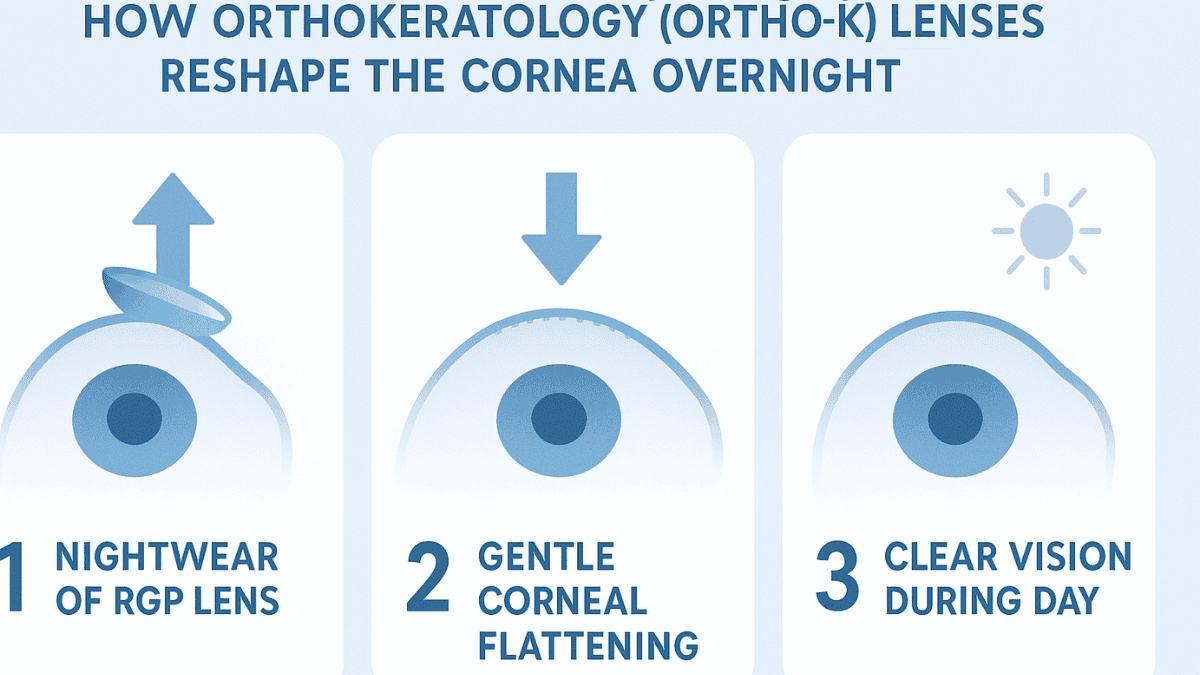
Orthokeratology, commonly known as Ortho-K, is a non-surgical procedure that uses specially designed RGP contact lenses to temporarily reshape the cornea. These lenses are typically worn overnight while sleeping and removed in the morning. The corneal reshaping effect allows for clear vision during the day without the need for glasses or daytime contact lenses.
This method is appealing for individuals involved in sports or those who find wearing corrective lenses during the day inconvenient. Ortho-K can effectively correct mild to moderate astigmatism, often along with myopia. Some studies suggest it may also help slow the progression of nearsightedness in children, making it a consideration for pediatric eye care.
The effect of Ortho-K is reversible; if lens wear is discontinued, the cornea gradually returns to its original shape. Regular follow-up eye exams with an eye doctor are essential to monitor corneal health and ensure the continued efficacy of the treatment. It is not suitable for everyone, and a thorough evaluation is needed to determine candidacy.
How Ortho-K Works
- Custom-designed rigid gas permeable contact lenses are worn during sleep.
- The lenses gently apply pressure to the cornea, subtly changing its curvature.
- Upon waking, the lenses are removed.
- The cornea maintains its reshaped form for a period, enabling clear unaided vision.
- Consistent nightly wear is required to sustain the vision correction.
An experienced eye care professional must fit Ortho-K lenses. This treatment is a significant part of eye care for managing certain refractive errors without daytime vision aids. Understanding the commitment and care involved is important before starting this therapy.
Related Article
Safe Alternatives to LASIK: PRK, LASEK, and Ortho‑K ExplainedLaser Eye Surgery: A Permanent Fix?
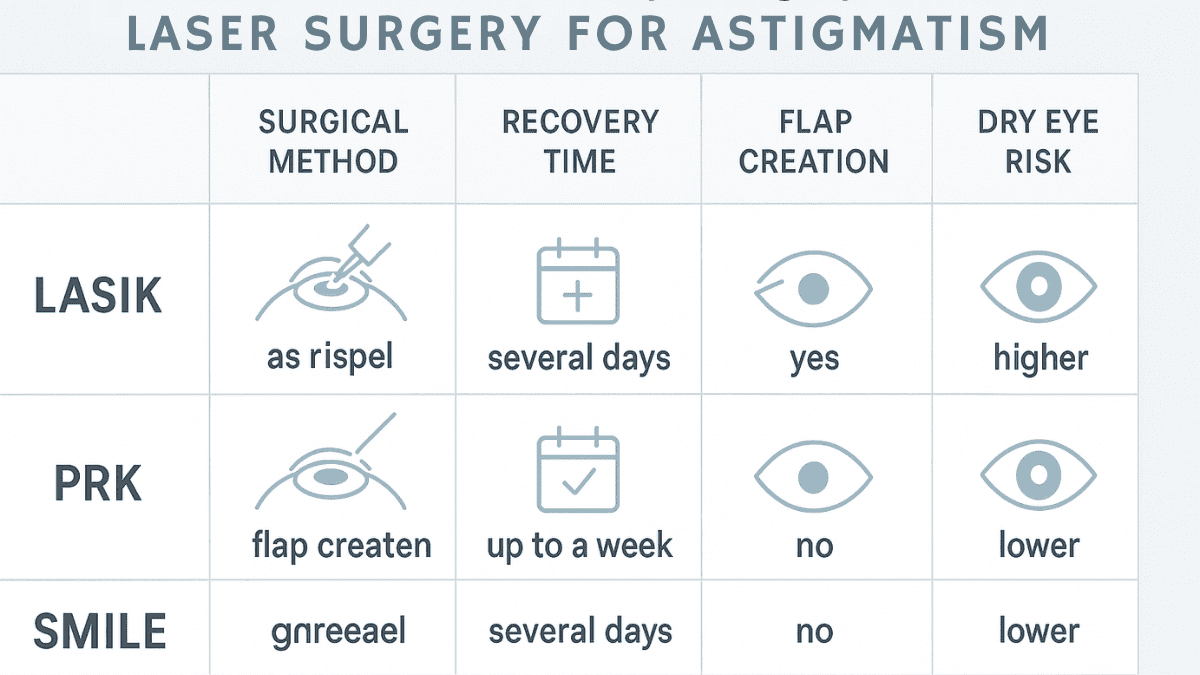
For individuals seeking a longer-lasting solution for treating astigmatism, various types of laser eye surgery offer effective vision correction. These refractive surgeries aim to permanently reshape the cornea, allowing light to focus correctly on the retina. Popular procedures include LASIK, PRK, and SMILE, each utilizing an excimer laser or other advanced laser technology.
Laser eye surgery can correct astigmatism, often in combination with nearsightedness or farsightedness. A thorough pre-operative eye exam and consultation with an ophthalmologist at a reputable eye institute are crucial to determine if you are a good candidate. Factors such as corneal thickness, overall eye health, and the stability of your prescription are considered.
While these procedures are generally safe and have high success rates for improving vision, they are surgical interventions and carry potential risks. These may include dry eye symptoms, glare, halos around bright lights, or, rarely, an eye infection. Discussing these potential health conditions and outcomes with your eye doctor is important.
Related Article
Types Of Laser Eye Surgery : GuideLASIK (Laser-Assisted In Situ Keratomileusis)
LASIK, or laser-assisted in-situ keratomileusis, is one of the most performed laser eye surgery procedures worldwide. During the LASIK procedure, the surgeon creates a thin, hinged flap on the cornea’s surface using a microkeratome or a femtosecond laser. The flap is gently lifted, and an excimer laser is used to precisely remove a microscopic amount of corneal tissue, reshaping its curvature.
After the laser reshapes the cornea, the flap is repositioned, where it adheres naturally without stitches. LASIK typically offers a rapid visual recovery, with many patients experiencing significantly improved vision within 24 to 48 hours. It is effective for a wide range of astigmatism, myopia, and hyperopia.
Candidates for LASIK eye surgery must have stable vision and good overall eye health. Certain corneal conditions or systemic health problems may make LASIK unsuitable. The results are generally permanent, though age-related vision changes like presbyopia can still occur later in life.
Related Article
LASIK Eye SurgeryPRK (Photorefractive Keratectomy)
Photorefractive keratectomy (PRK) was the first type of laser eye surgery and is still widely used, particularly for individuals who may not be ideal candidates for LASIK. This can include those with thinner corneas or certain lifestyle factors, like participation in contact sports. Unlike LASIK, PRK does not involve creating a corneal flap.
In PRK, the surgeon gently removes the cornea’s outermost layer, the epithelium, which then regenerates naturally over several days. An excimer laser is then used to reshape the underlying corneal tissue, similar to LASIK. A protective bandage contact lens is placed on the eye to aid healing and comfort.
The visual recovery from PRK is typically slower than with LASIK, often taking several days to a week for functional vision and several weeks for vision to fully stabilize. However, the long-term visual outcomes of PRK are comparable to those of LASIK. It remains a valuable option in refractive surgery for treating astigmatism.
Related Article
PRK Surgery: OverviewSMILE (Small Incision Lenticule Extraction)
SMILE is a more recent advancement in laser vision correction. This minimally invasive procedure involves using a femtosecond laser to create a small, lens-shaped piece of tissue (lenticule) within the cornea. The surgeon then removes this lenticule through a very small incision, typically less than 4mm wide.
By removing the lenticule, the corneal curvature is changed, correcting the refractive error. SMILE is currently used to correct myopia and astigmatism. One potential advantage of SMILE is that it may result in less disruption to corneal nerves, potentially leading to a lower incidence of post-operative dry eye compared to LASIK.
Recovery from SMILE is generally quick, similar to LASIK. As a newer procedure, long-term data is still being gathered, but initial results are promising. Consultation with an experienced refractive surgeon can determine if SMILE is an appropriate choice for your specific vision problems.
Related Article
SMILE Laser Eye Surgery: GuideLens Implants: An Option for Severe Cases
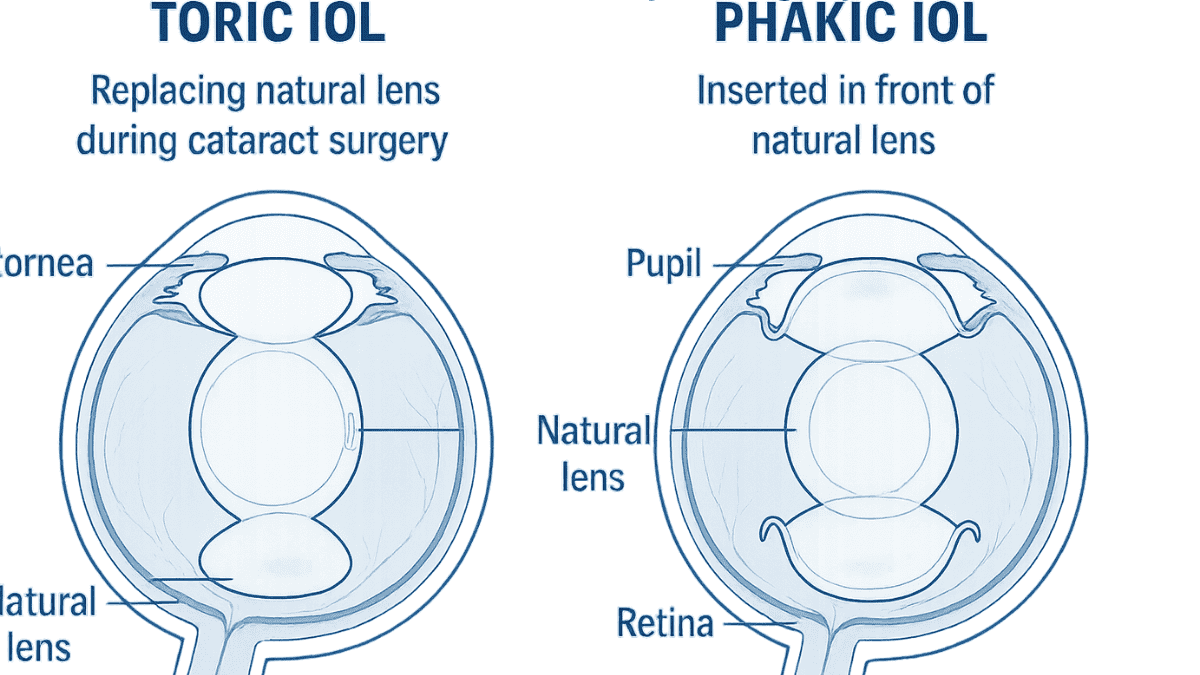
For individuals with very high degrees of astigmatism, or those who are not suitable candidates for laser eye surgery (perhaps due to thin corneas or other eye conditions like cataracts), lens implants offer another effective path to vision correction. This type of lens surgery involves implanting an artificial lens inside the eye. These implantable contact lenses or intraocular lenses (IOLs) are designed to correct significant refractive errors.
Lens implant procedures are more invasive than laser-based refractive surgeries and are performed in a surgical setting. The type of lens implant recommended will depend on various factors, including the patient’s age, the health of their natural lens, and the specific vision correction needed. These options can provide excellent visual outcomes for patients with complex eye disorders.
Toric Intraocular Lenses (IOLs)
Toric intraocular lenses are most commonly used during cataract surgery. When a cataract (clouding of the eye’s natural lens) is removed, it is replaced with an artificial IOL. If the patient also has astigmatism, a toric IOL can be implanted to correct both the cataract and the astigmatism in a single procedure.
These specialized lenses have different powers in different meridians, similar to toric contact lenses or eyeglasses, to neutralize the astigmatism. The surgeon carefully aligns the toric IOL within the eye to ensure optimal astigmatism correction. This can significantly reduce or eliminate the need for glasses for distance vision after cataract surgery.
Phakic Intraocular Lenses (PIOLs)
Phakic intraocular lenses, sometimes referred to as implantable contact lenses (ICLs), are an option for younger patients with high refractive errors who do not have cataracts. Unlike IOLs used in cataract surgery, PIOLs are implanted in the eye without removing the natural crystalline lens. The PIOL works in conjunction with the natural lens to focus light correctly on the retina.
PIOLs can be placed either in front of the iris or between the iris and the natural lens. They are effective for correcting high levels of myopia, hyperopia, and astigmatism. This type of lens surgery is reversible, as the PIOL can be surgically removed if necessary.
Both types of lens implants can dramatically improve vision for suitable candidates. As with any eye surgery, there are potential risks, including inflammation, infection, or changes in eye pressure. A thorough discussion with an eye surgeon is essential to weigh the benefits and risks.
Choosing the Right Astigmatism Treatment
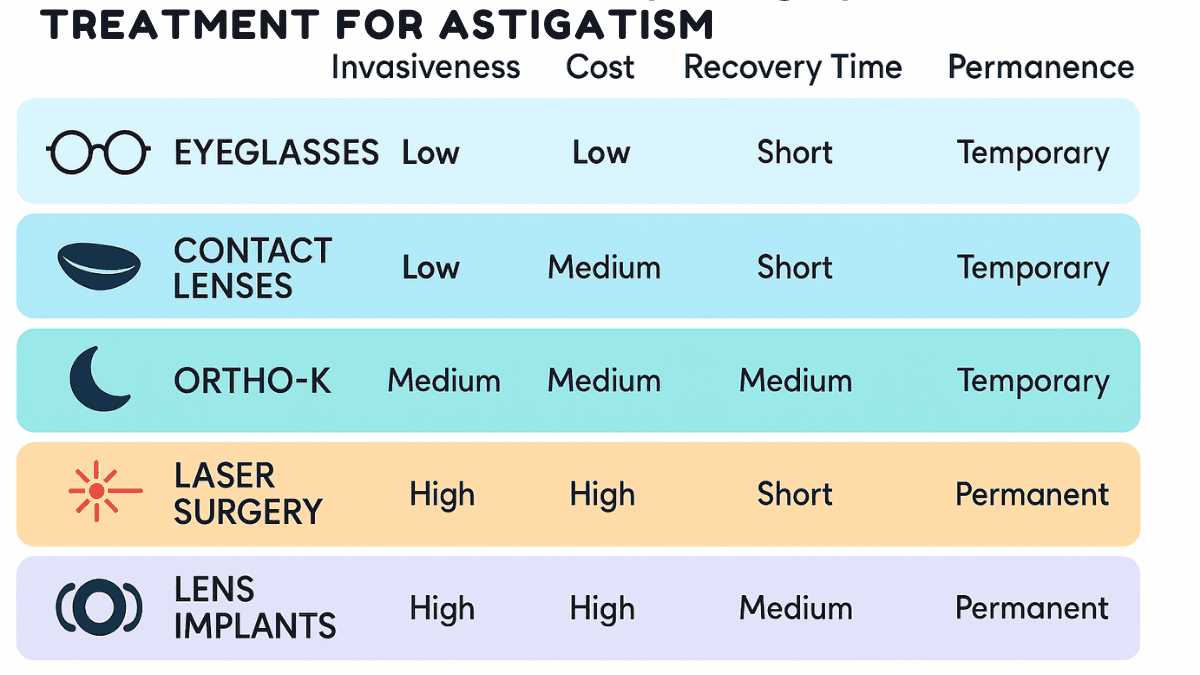
With several effective astigmatism treatments available, selecting the most appropriate one requires careful consideration and professional guidance. The decision depends on multiple factors unique to each individual. Consulting with an experienced eye doctor or an eye institute is the first and most crucial step.
Your eye care provider will conduct a comprehensive eye exam to assess the severity and type of your astigmatism. They will also evaluate your overall eye health and discuss how your lifestyle, daily activities, and visual needs might influence your treatment choice. For example, someone with an active lifestyle might prefer contact lenses or surgical options over glasses.
The presence of other vision problems, such as nearsightedness, farsightedness, or presbyopia, will also be a factor. Some treatments can address multiple refractive errors simultaneously. It is also important to consider your budget, as costs can vary significantly between options like glasses, contact lenses, and different types of refractive surgeries. Some clinics may offer financial assistance programs for certain eye procedures, so it’s worth inquiring if cost is a concern.
Below is a general comparison of common astigmatism treatments:
| Treatment Option | Invasiveness | Typical Cost | Recovery Time | Permanence |
|---|---|---|---|---|
| Eyeglasses | Non-invasive | Low to Moderate | Immediate | Corrects vision only when worn |
| Contact Lenses | Non-invasive (surface wear) | Moderate (ongoing) | Immediate | Corrects vision only when worn |
| Orthokeratology (Ortho-K) | Non-invasive (surface wear, overnight) | Moderate to High (initial + ongoing) | Gradual (days to weeks for full effect) | Temporary (requires nightly wear) |
| LASIK/PRK/SMILE (Laser Eye Surgery) | Minimally invasive surgery | High | LASIK/SMILE: Rapid (1-2 days) PRK: Slower (1 week+) | Generally permanent (vision can change with age) |
| Lens Implants (IOLs/PIOLs) | Invasive surgery | Very High | Days to weeks | Permanent (lens can be exchanged if needed) |
When researching clinics for astigmatism treatments, especially for surgical eye procedures, ensure they are reputable. A trustworthy clinic for astigmatism will provide clear information; check their website for details on their medical professionals, the technologies they use, and patient testimonials. Good providers usually have their privacy policy notice and information about their privacy practices easily accessible, often via a site map or a dedicated section, outlining how data like cookies collect information if you request appointment details online.
Many eye care resources, such as those provided by the National Eye Institute or the American Academy of Ophthalmology, offer valuable, often medically reviewed, information about eye conditions and treatments. The American Optometric Association also provides resources for patients seeking eye care. Ultimately, a detailed discussion with your eye doctor about your experiencing symptoms and vision goals will guide you to the best decision for treating astigmatism and achieving clear vision.
Related Article
What to Expect During a LASIK ConsultationConclusion
Astigmatism treatments have advanced significantly, offering a range of solutions to correct this common vision problem. From traditional eyeglasses and various types of contact lenses to sophisticated laser eye surgery and lens implants, there is likely an option that aligns with your specific needs, lifestyle, and the health conditions of your eyes. The goal is to improve vision and enhance your quality of life.
Remember, the optimal treatment for one person may not be the best for another. The journey to clearer vision starts with a comprehensive eye exam and an open conversation with your eye doctor or a specialist at an eye institute. They are the medical professionals best equipped to guide you through the options, helping you choose the most suitable path for treating astigmatism and achieving your best possible vision.
Consistent eye care and regular eye exams are vital for maintaining eye health and addressing any vision problems promptly. By staying informed and working closely with your eye care provider, you can effectively manage astigmatism and enjoy the benefits of clear vision for years to come. Do not hesitate to request appointment information if you are experiencing symptoms of an eye problem.
Related Article
Blurry Vision After LASIK: Causes and What to ExpectFAQ
Among available options, LASIK typically offers the fastest visual recovery for astigmatism. Most patients experience noticeable improvements within 24 to 48 hours post-surgery.
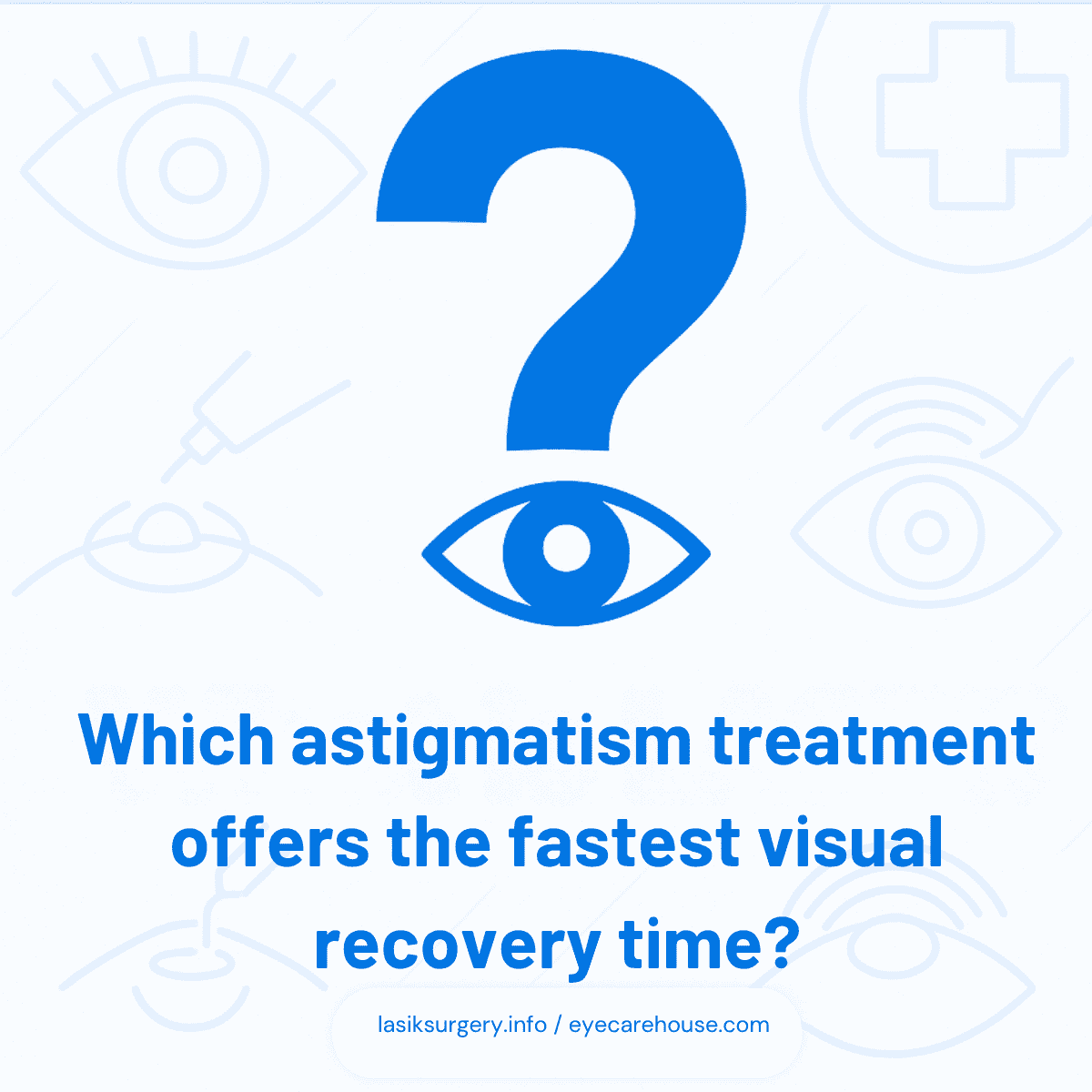
No, orthokeratology (Ortho-K) provides temporary reshaping of the cornea. Vision correction is maintained only with consistent nightly lens use and reverses if discontinued.
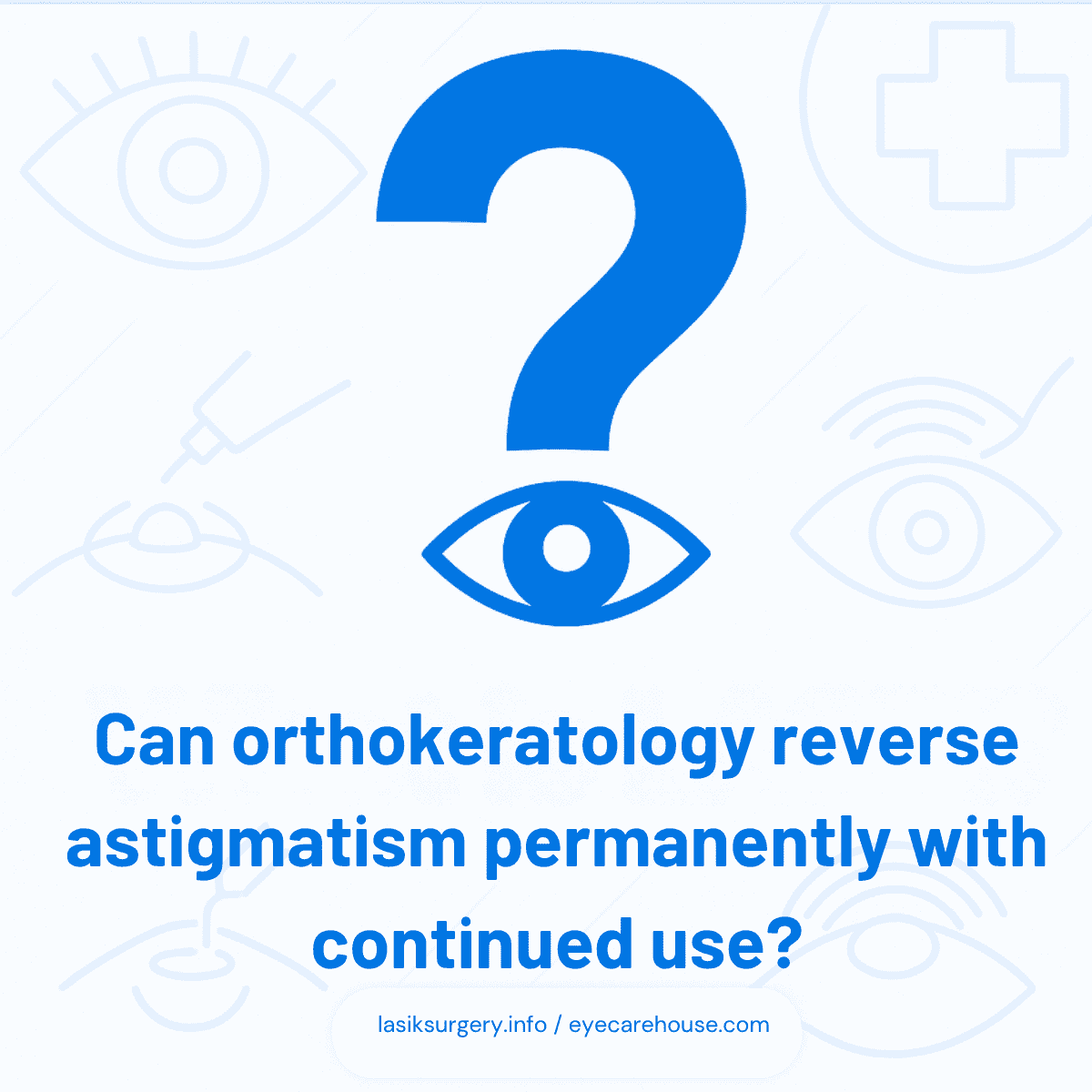
LASIK directly reshapes the cornea to correct the irregular curvature causing astigmatism, unlike glasses or contacts which only compensate temporarily for distorted vision.
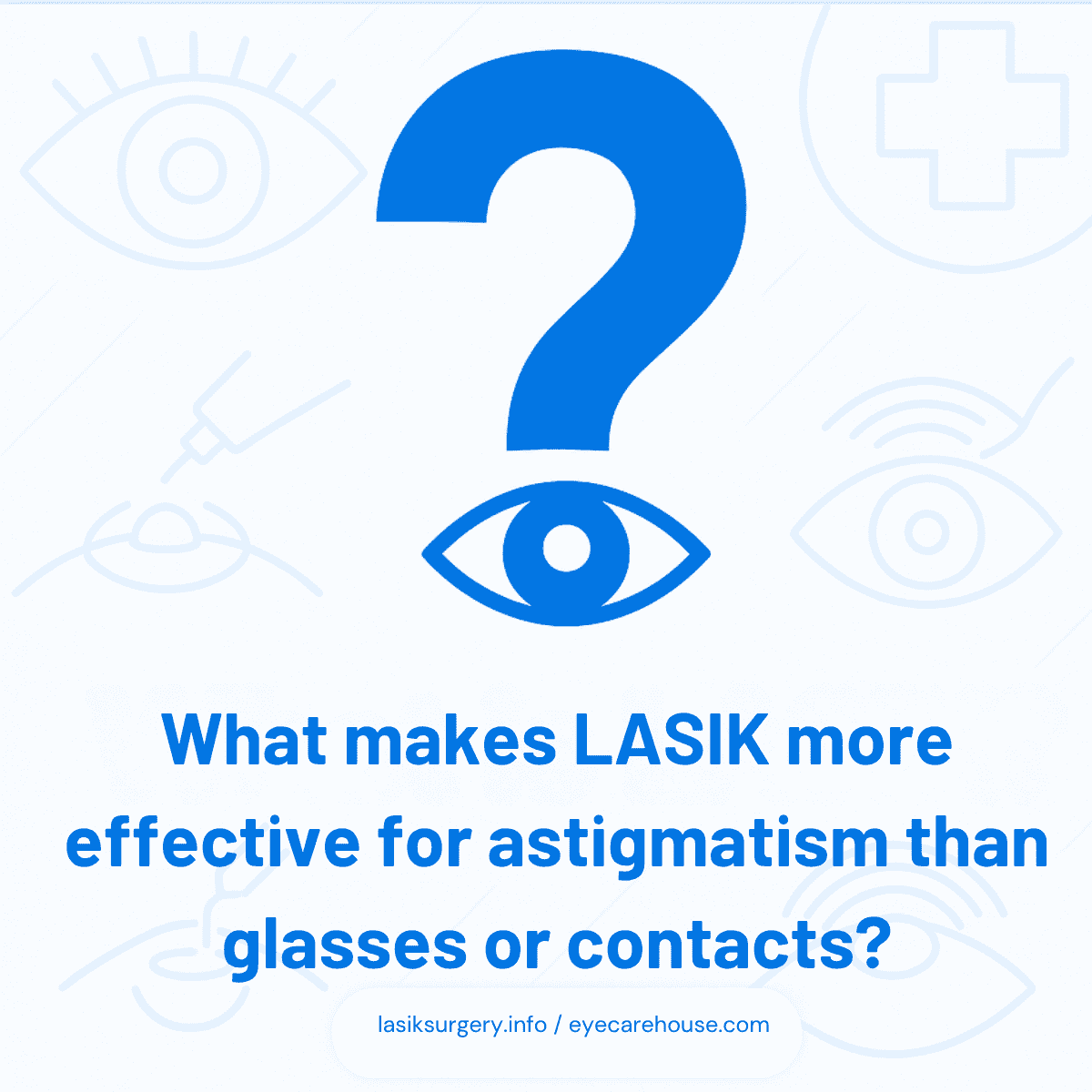
Toric lenses are effective for regular astigmatism but may not provide optimal results for irregular or severe cases, where rigid lenses or surgical options are preferred.
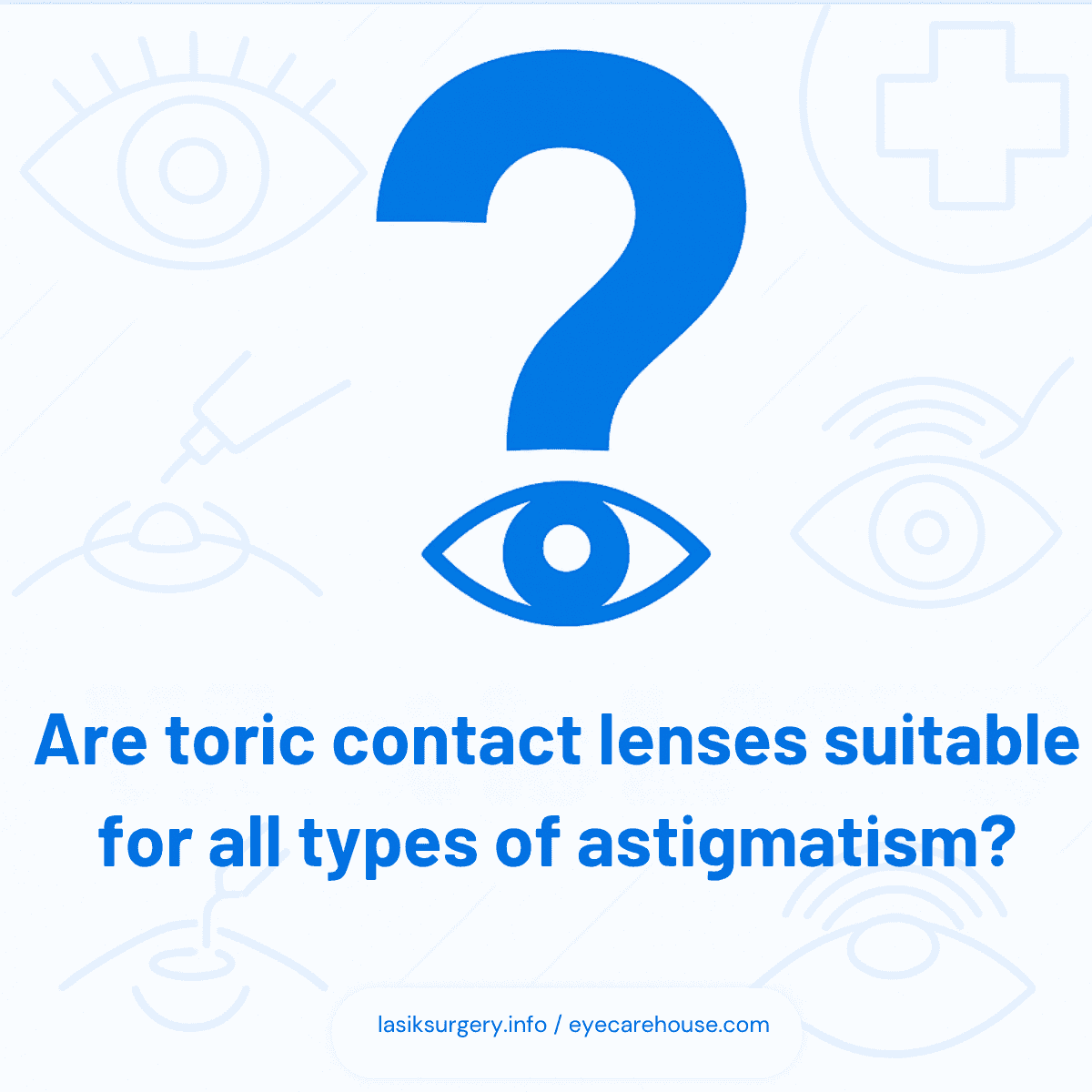
Adequate corneal thickness is required for safe laser correction. Thin corneas may disqualify patients from LASIK but still allow PRK or SMILE under specialist guidance.
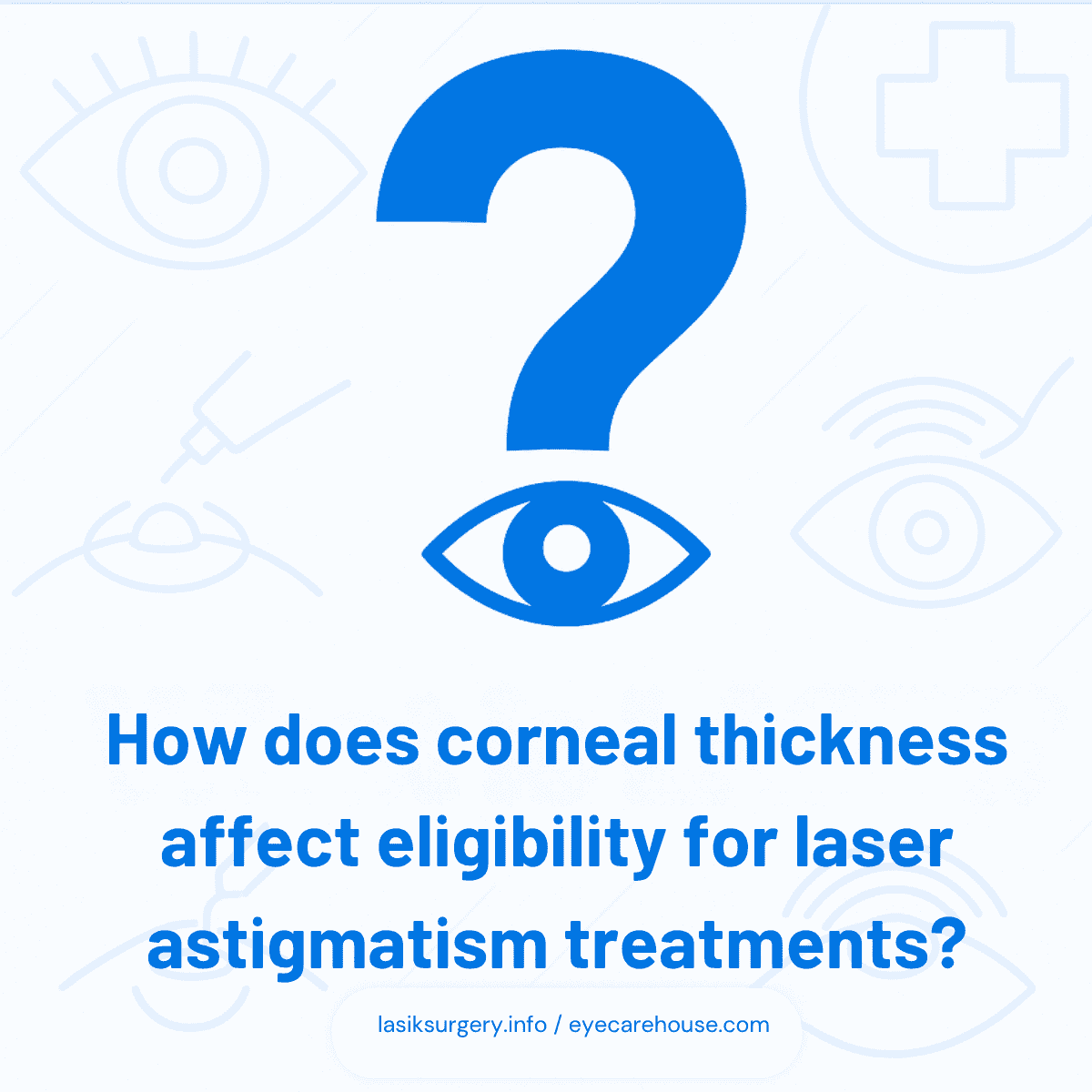
While rare, astigmatism can return due to natural eye changes or incomplete correction. Enhancements or additional procedures may be needed in some cases.
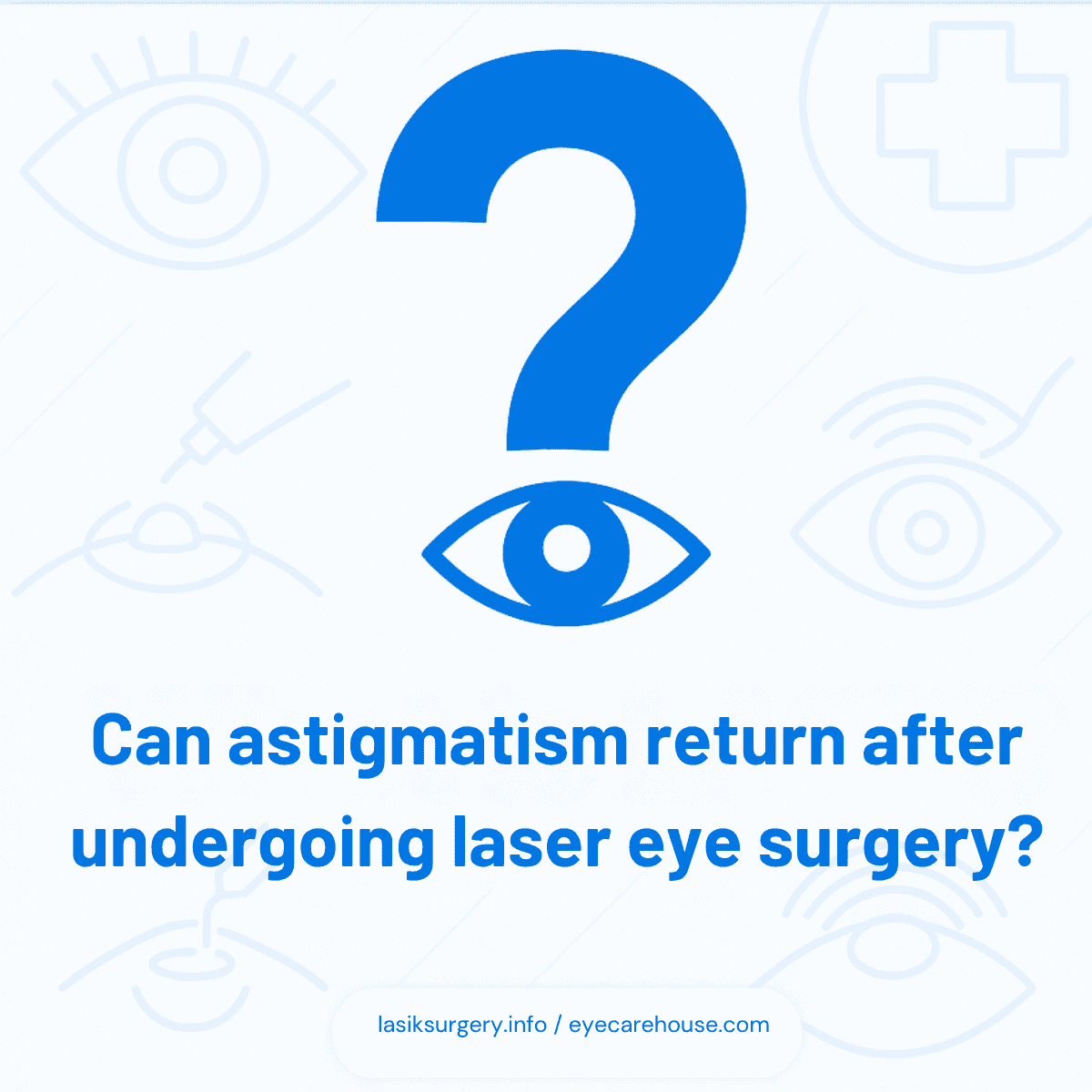
Toric IOLs replace the natural lens during cataract surgery, while PIOLs are implanted without removing the natural lens, offering correction for high refractive errors.
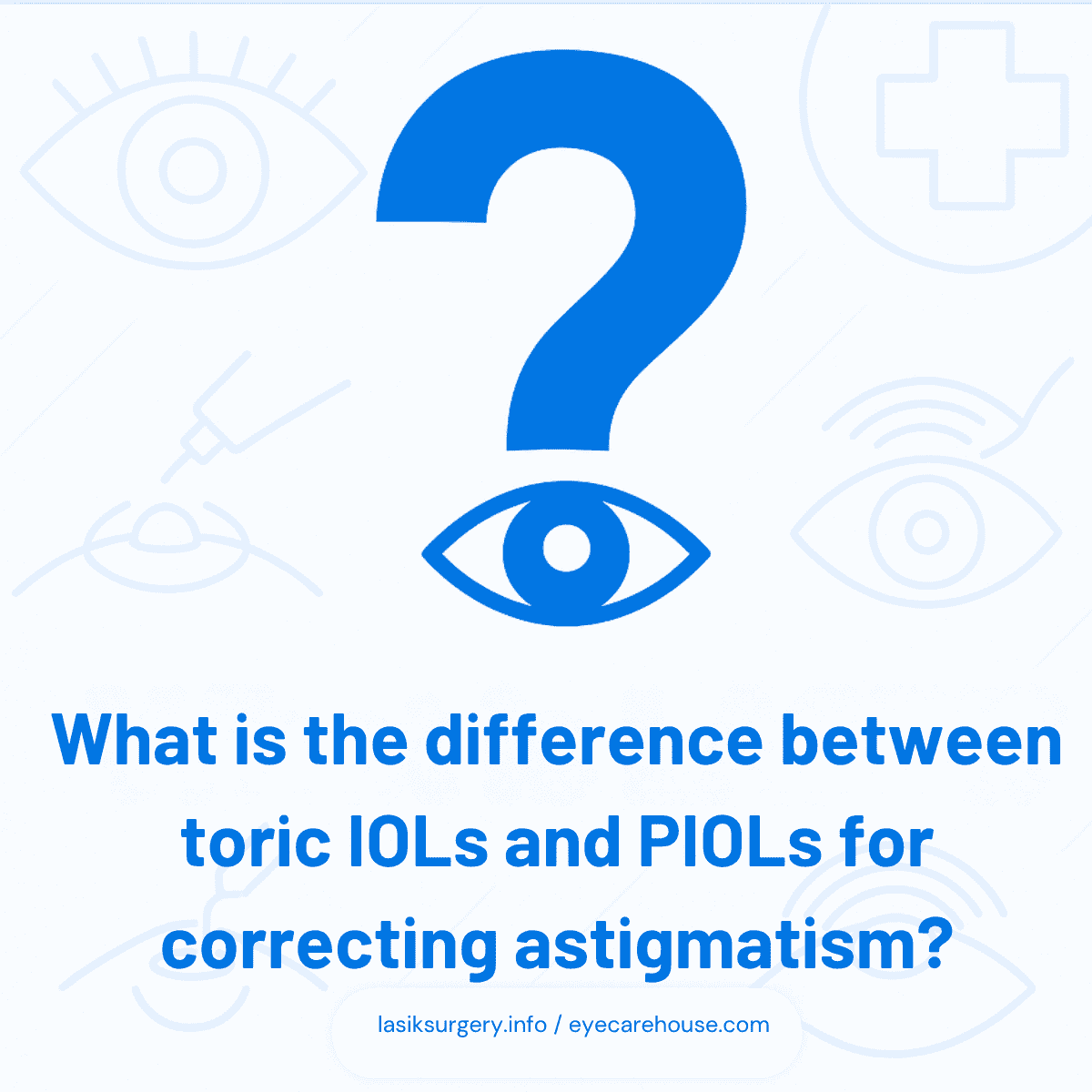
Yes, severe astigmatism may need a combination of lens implants, laser procedures, or specialty contact lenses for optimal vision correction.
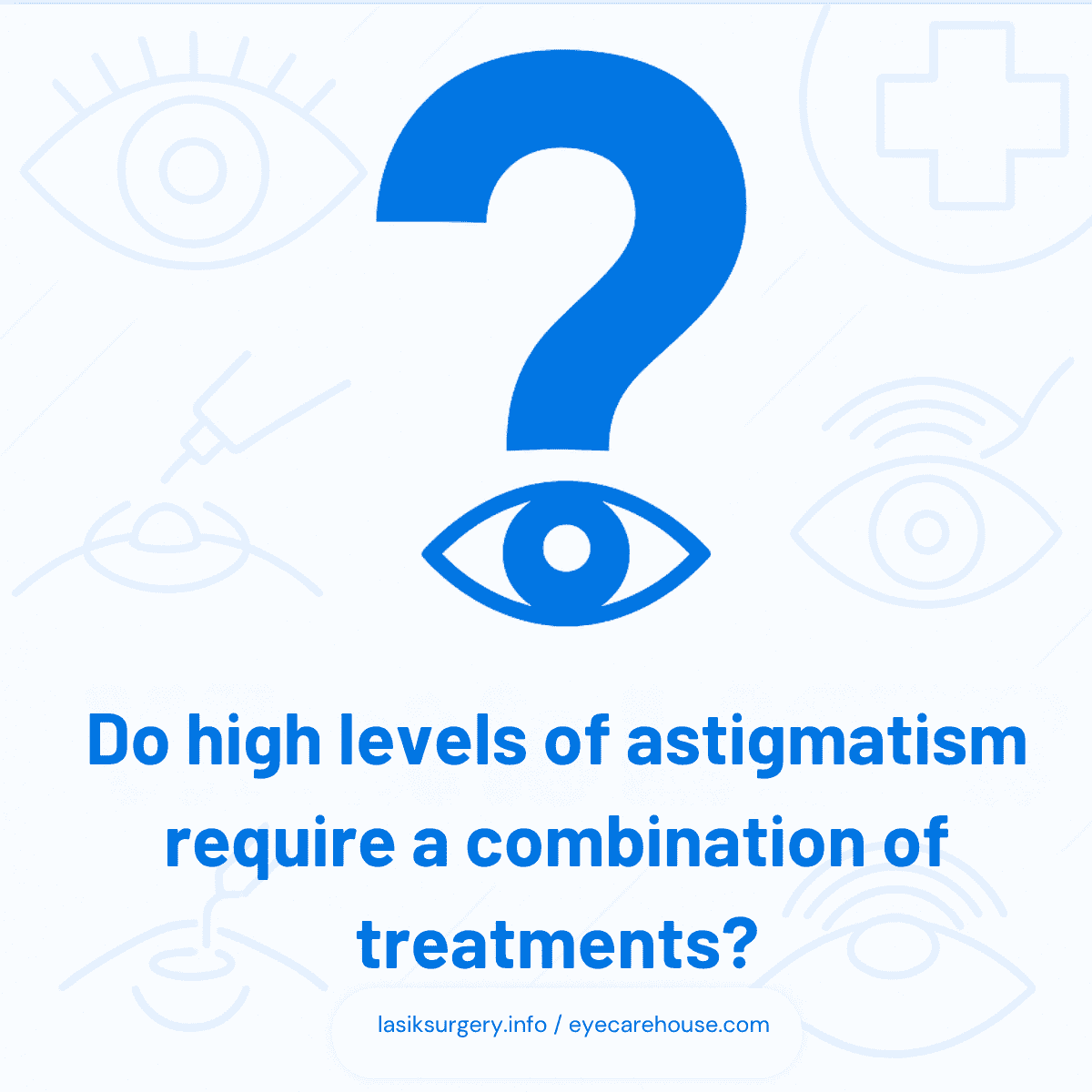
SMILE surgery and orthokeratology are associated with lower dry eye risk compared to LASIK, making them suitable for patients with existing tear film issues.
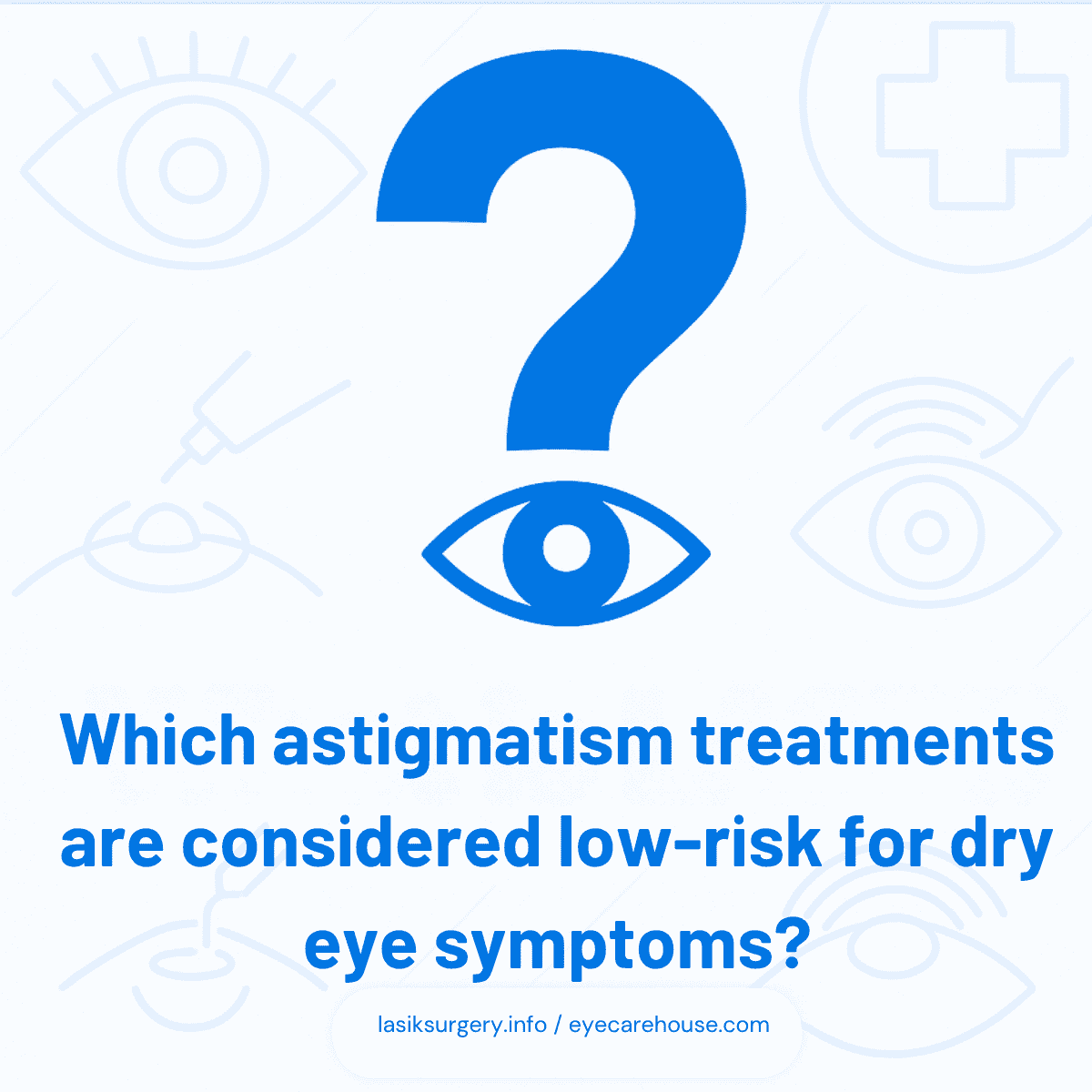
Ortho-K lenses apply gentle pressure overnight to flatten the cornea, reducing its asymmetry and improving light focus without surgery or daytime wear.
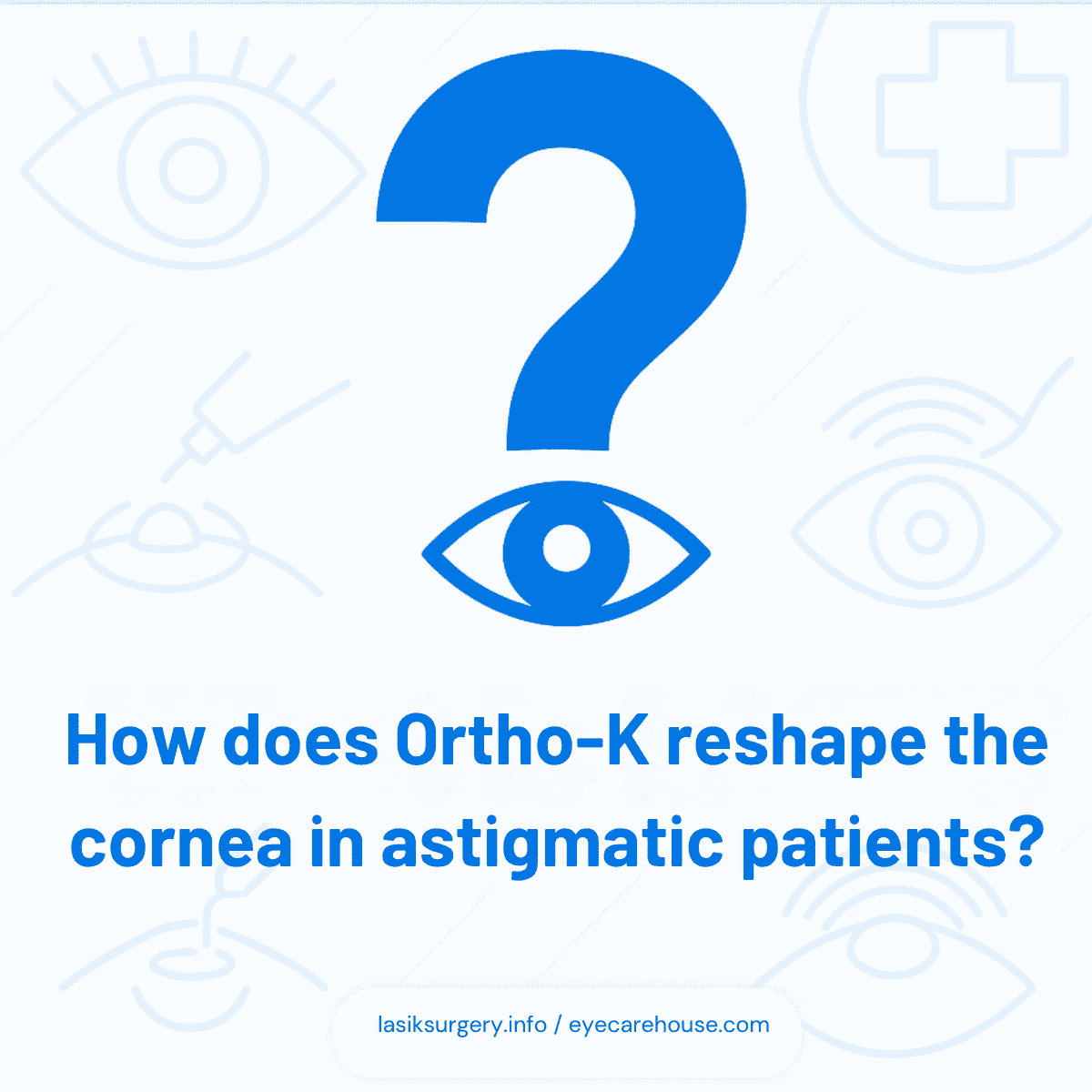
SMILE is currently approved for regular astigmatism and may not be ideal for complex or irregular cases, which often require custom laser treatments or lenses.
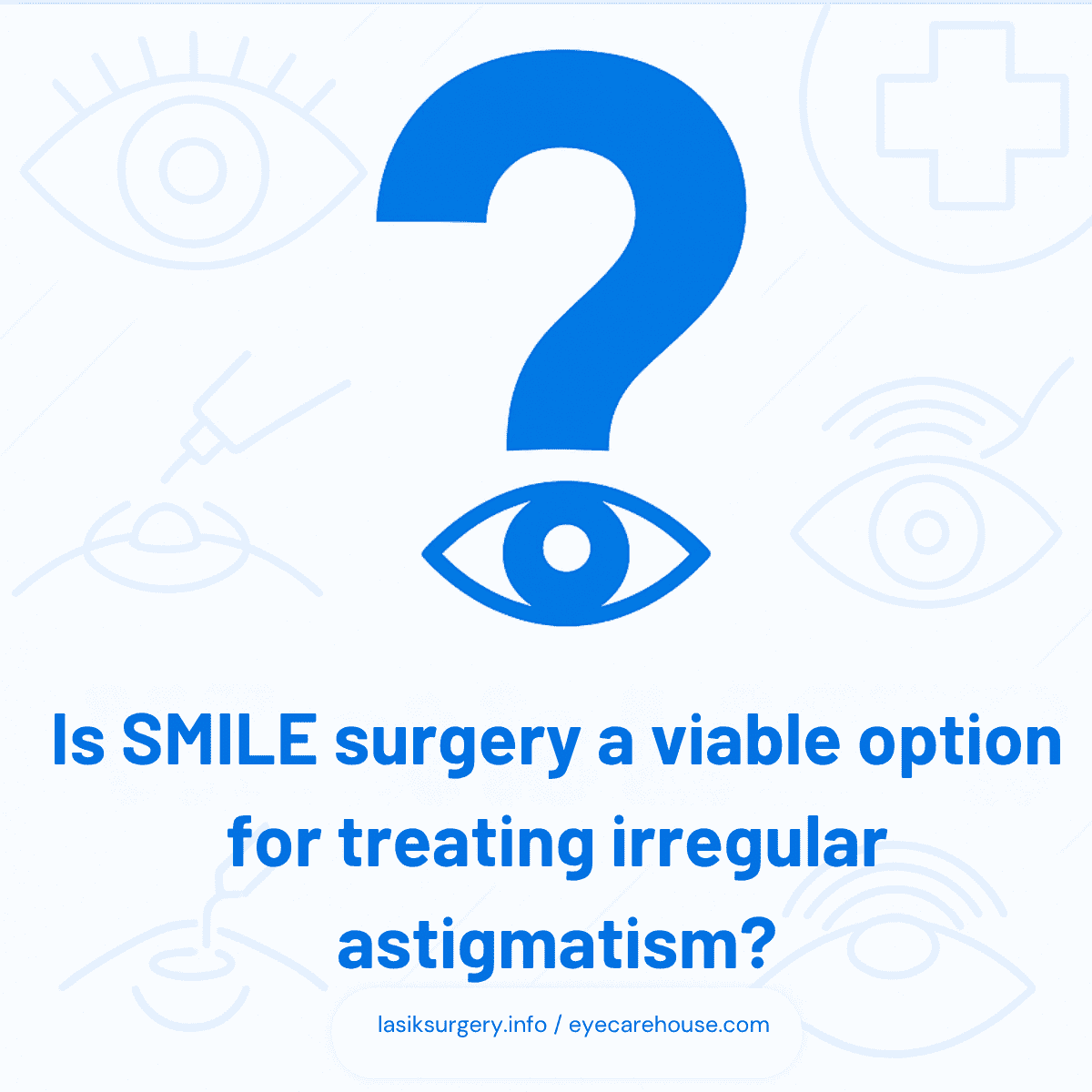
Yes, toric intraocular lenses (IOLs) allow cataract patients to correct astigmatism simultaneously by neutralizing corneal curvature during the procedure.
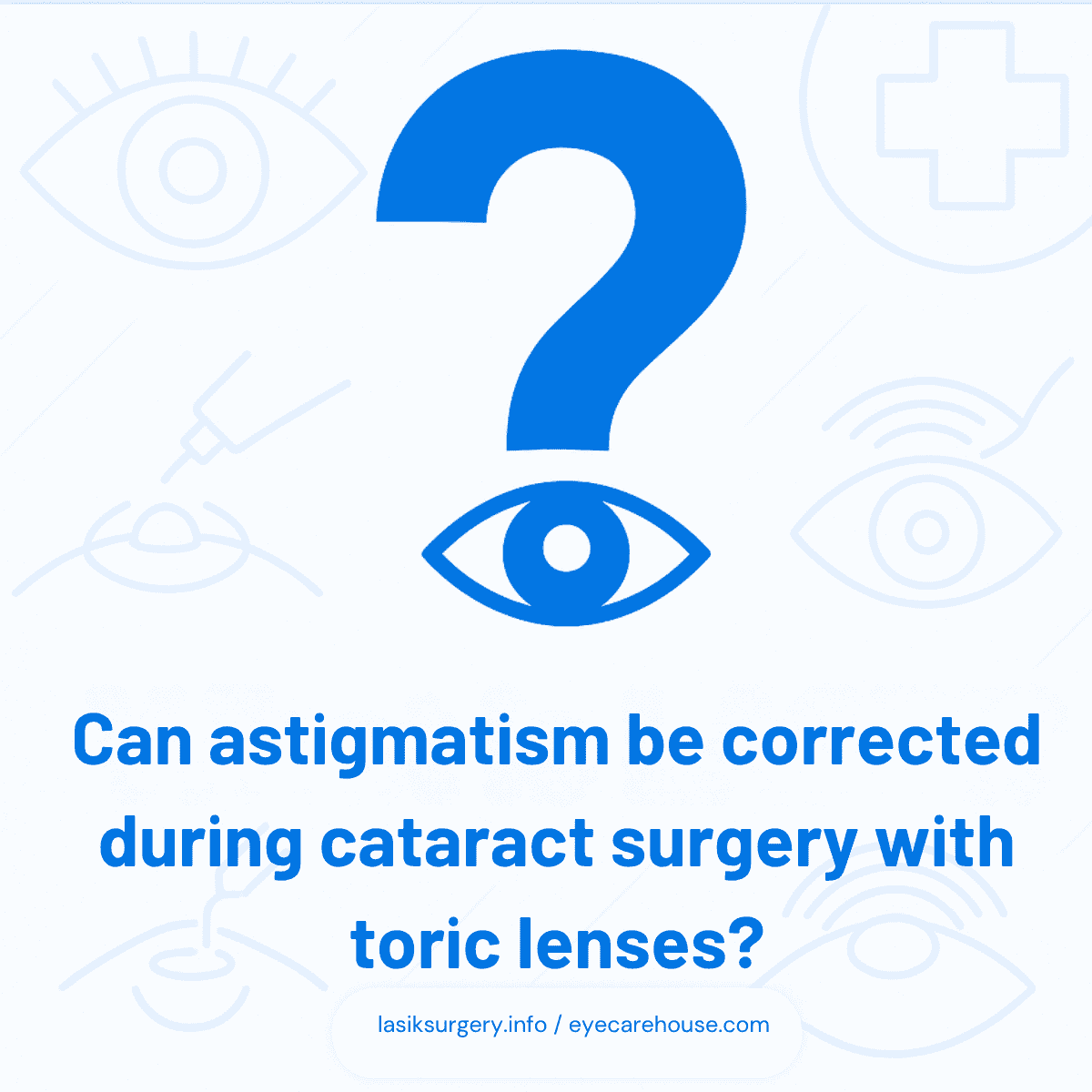
Large pupils may increase the risk of glare or halos post-surgery. This factor is assessed during pre-op screening to determine LASIK or SMILE suitability.

Yes, rigid gas permeable (RGP) lenses and hybrid contacts can effectively correct high or irregular astigmatism when surgery is not an option.
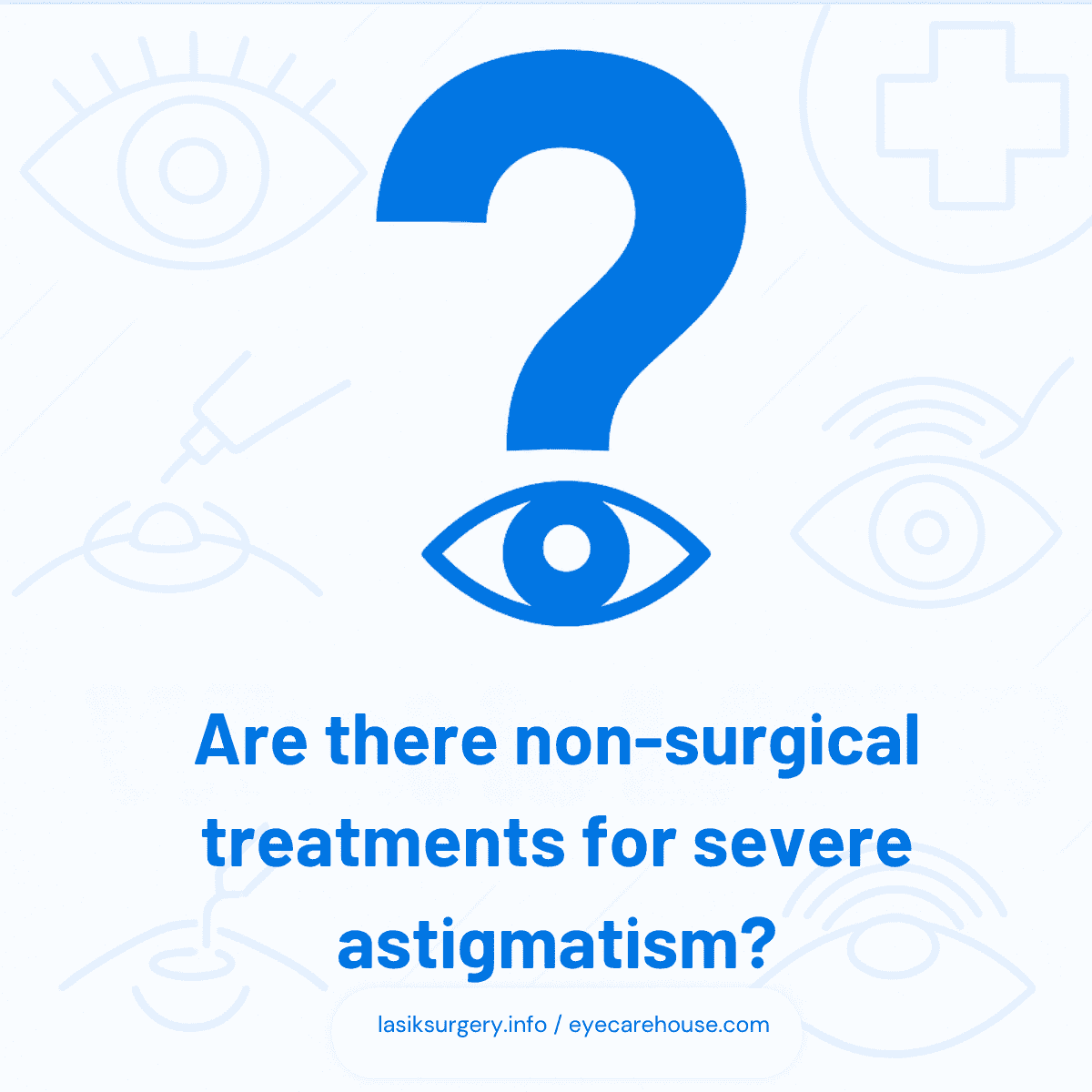
Astigmatism surgeries such as LASIK or SMILE typically range from $1,800 to $3,200 per eye in the U.S., depending on clinic, technology, and surgeon expertise.
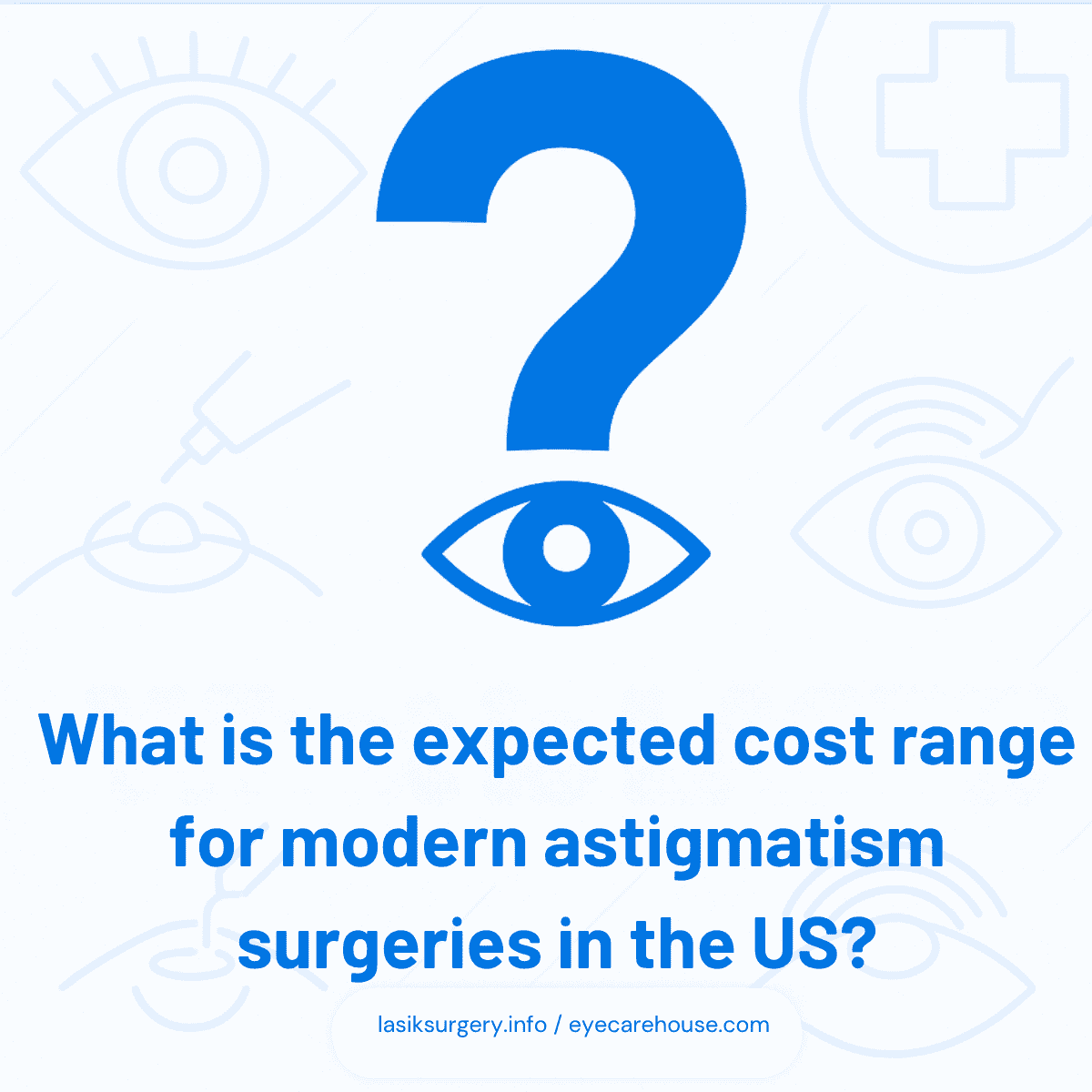
Most patients need updated prescriptions annually, or sooner if visual symptoms return, to ensure stable and accurate astigmatism correction.
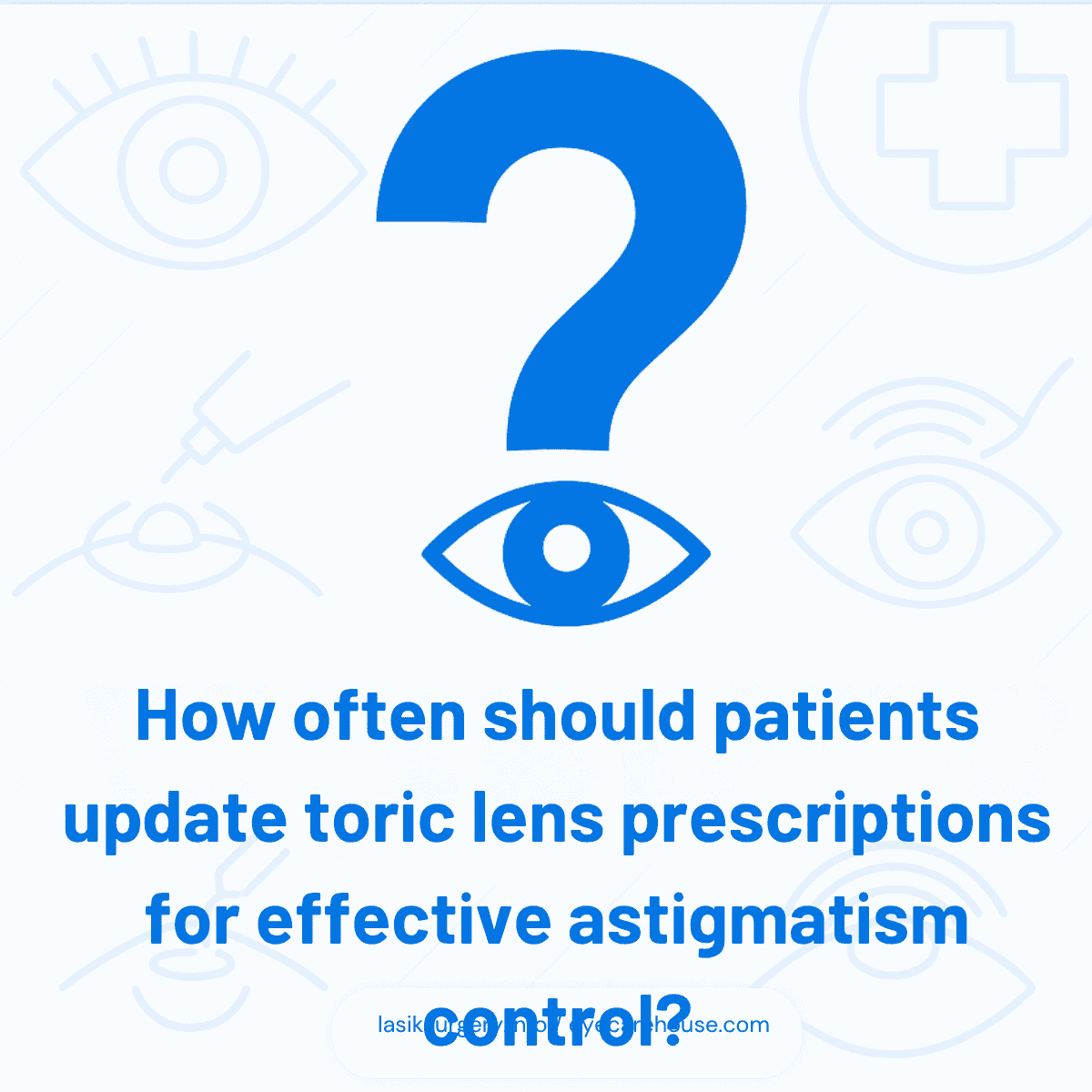
Yes, treatments like Ortho-K are more commonly used in children, while surgical options are reserved for adults with stable refractive errors.
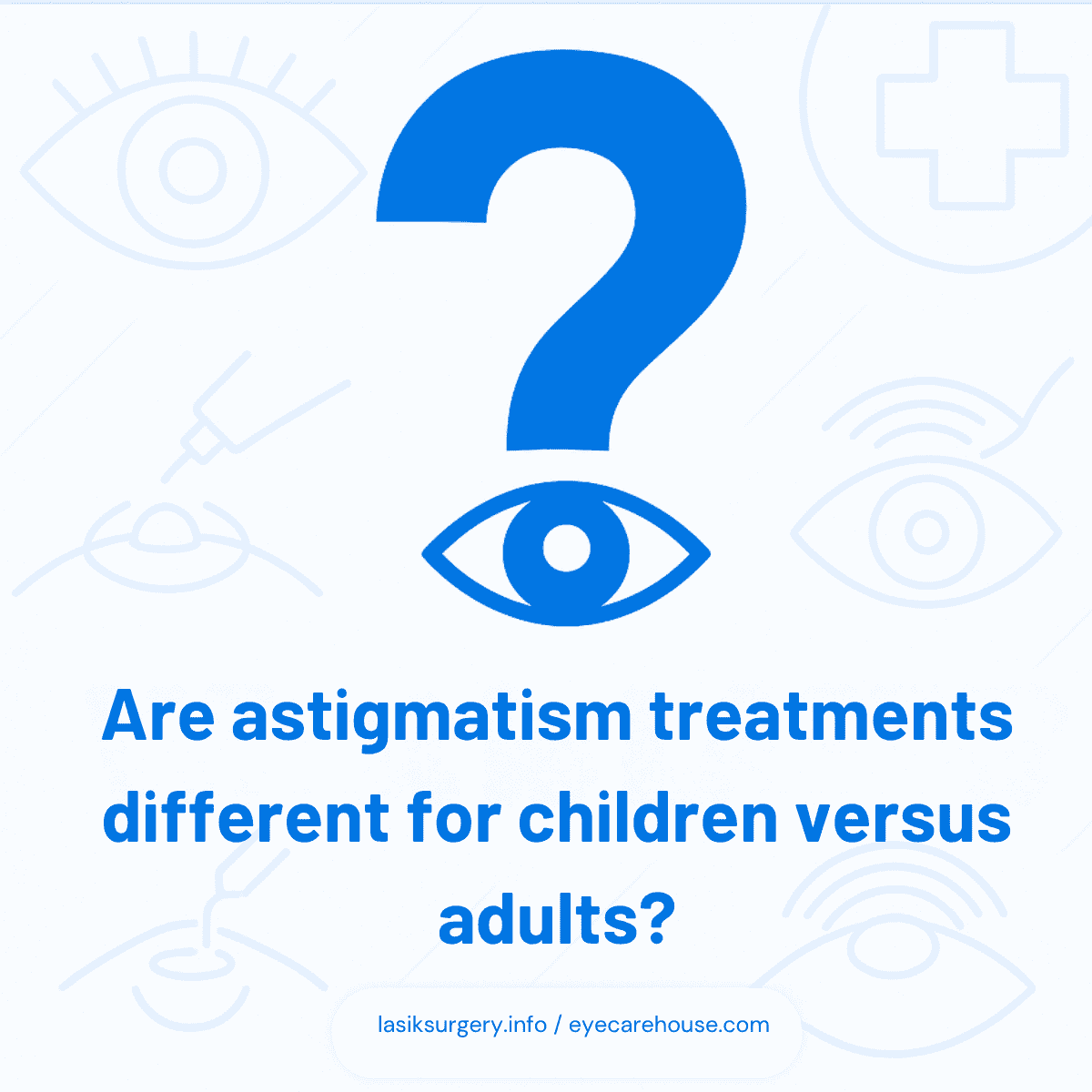
Yes, phakic IOLs or toric IOLs are effective alternatives for patients unsuitable for laser eye surgery due to corneal or systemic health limitations.
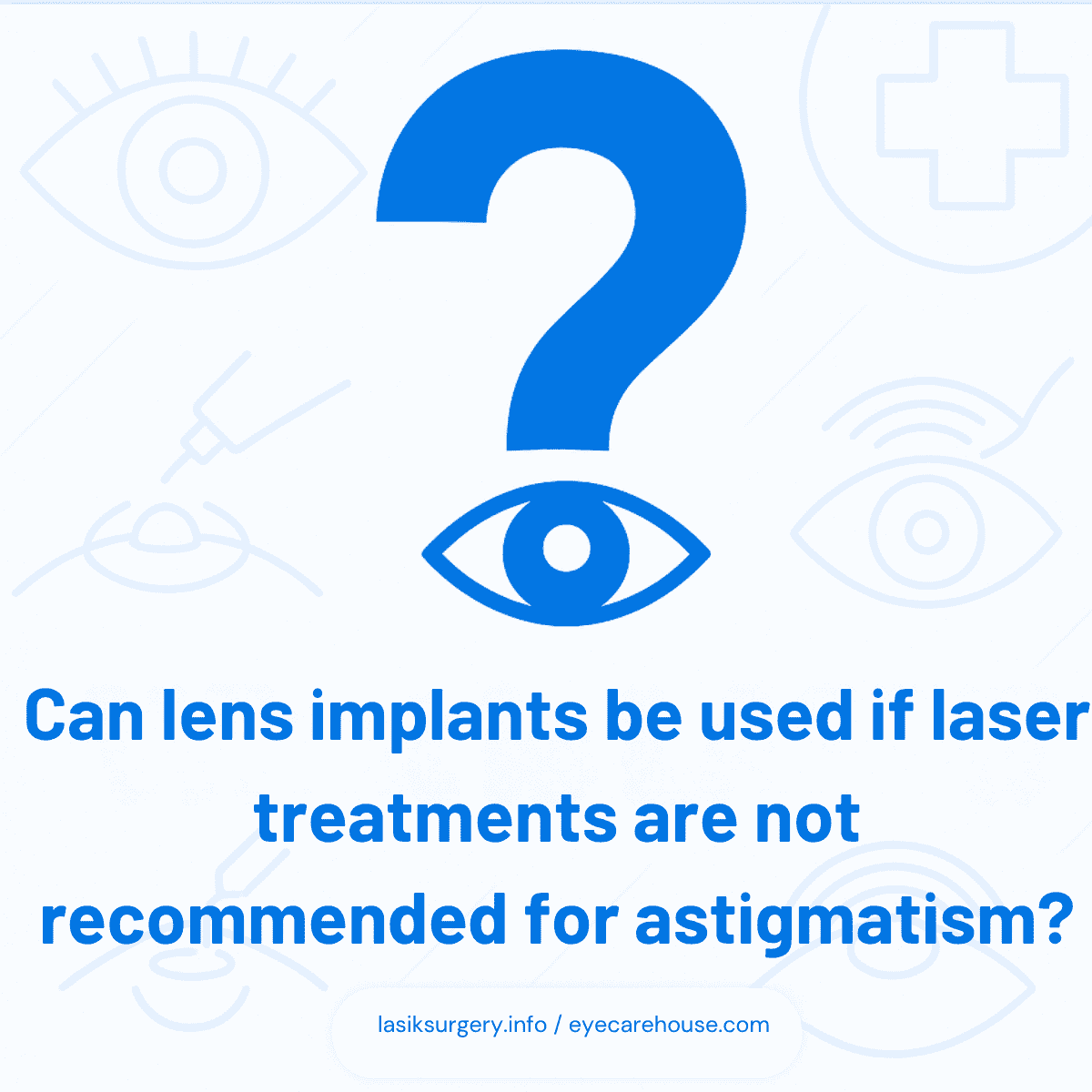
No, custom LASIK with wavefront-guided mapping often offers the highest precision, while PRK and SMILE may be used based on patient anatomy and goals.
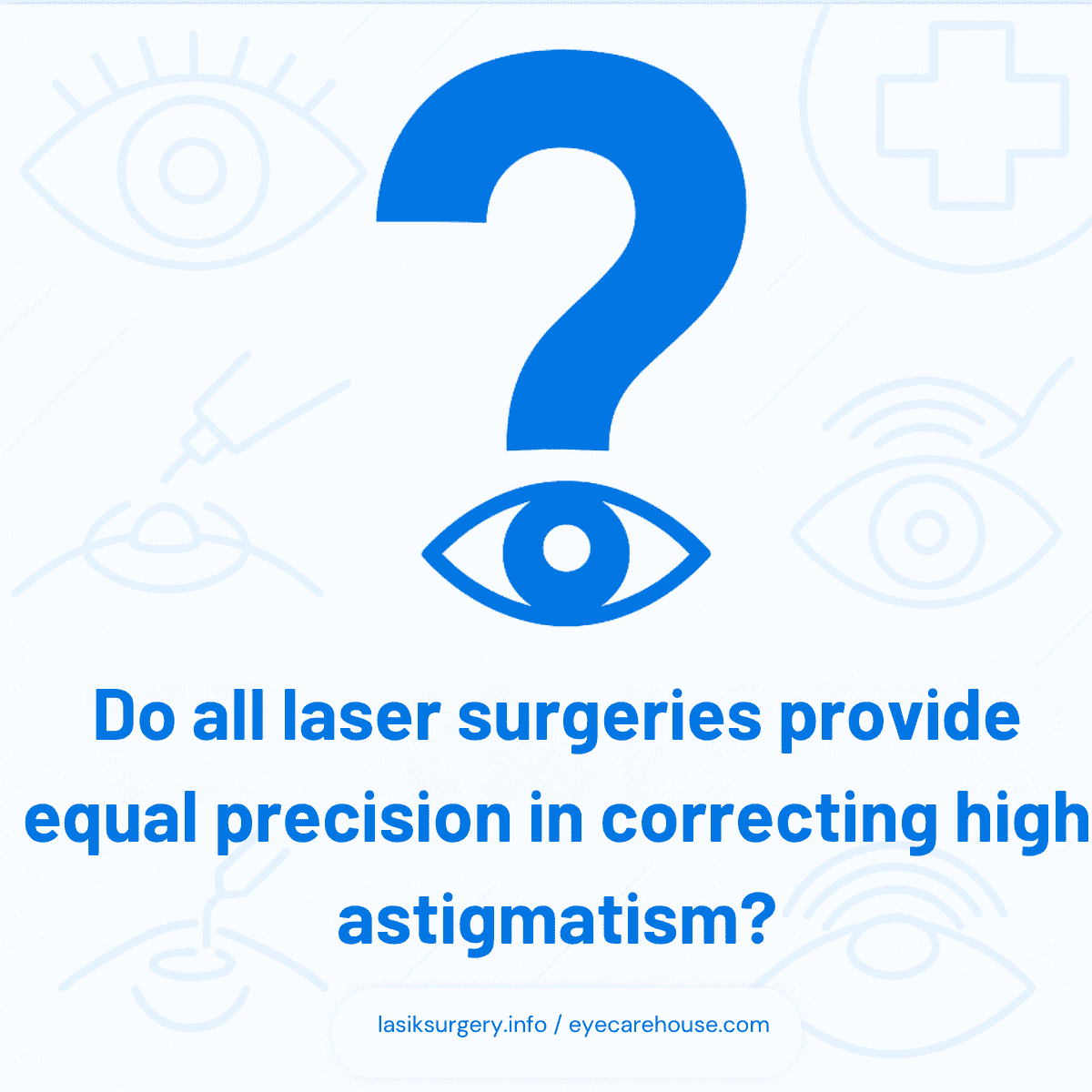
Activity level, job requirements, comfort with lenses, and screen time should guide treatment selection to ensure practicality and long-term satisfaction.
